If you’re wondering where to start with Japanese literature, these are the best Japanese books across sci-fi, mystery, literary fiction, and more.
Japanese literature is everywhere. The nation’s stories and novels get turned into manga, anime, and movies. Their authors are as famous and legendary as Hollywood’s actors and directors. And Japanese literature is big across the world.

The best Japanese books are often quick to be translated and, no matter how niche they may seem, they will find an audience. We at Books and Bao love the literature of Japan more than that of any other country, and Japanese authors have swum in the deep waters of every single genre.
Whether you’re looking for literary fiction, Japanese horror books, or Japanese mystery novels, you’ll find a few new favourites here amongst some of the best Japanese books of all time.
If you’ve always wondered where to start with Japanese literature, especially if you usually prefer a specific genre like romance, mystery, or fantasy, this guide to Japanese fiction will help you find the perfect book for you, whatever the genre.
Here, you’ll find twelve genres of Japanese literature, each with at least two unique Japanese book recommendations from us personally. Enjoy, and happy reading! If you want to stay up-to-date with the best new Japanese books every year, we’ve got you covered!
Classic Japanese Fiction
There are two meanings of the word ‘classic’ when it comes to fiction. There’s the official meaning, which is ‘any book that’s over 100 years old’ and then there’s the colloquial meaning which is, ‘anything the zeitgeist deems a classic’. So, for classic Japanese fiction, let’s have a bit of both.
Here, you’ll find some classic Japanese novels from times and eras long gone, and others from the last century which are now hailed as unparalleled modern classics of Japanese literature not to be missed. These, unsurprisingly, represent some of the best Japanese books around, full stop.
The Tale of Genji by Murasaki Shikibu
Translated by Kencho Suematsu
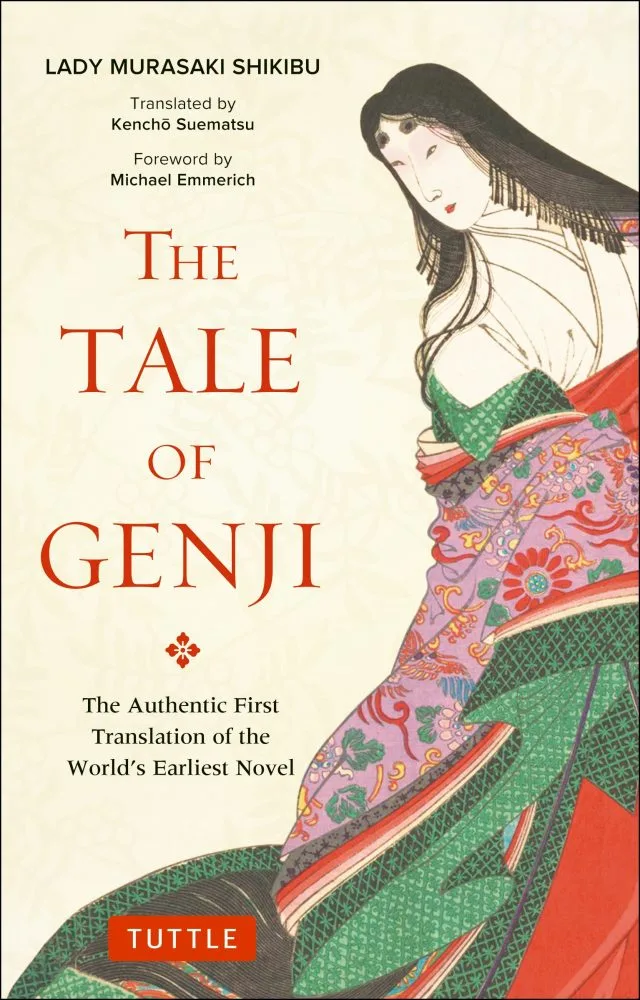
The Tale of Genji has quite the legacy. Not only was it the first Japanese novel, but it is widely considered to be the first novel ever written anywhere in the world. That alone makes it one of the most important and best Japanese novels to read right now.
Written by the Kyoto noblewoman Murasaki Shikibu in the 11th century CE, The Tale of Genji takes us on a journey alongside the son of an emperor: Hikaru Genji.
Genji is no longer in the line of succession and spends much of the novel’s story forming and then ruining relationships with various women in Kyoto.
The novel is a fascinating insight into the lives of Japan’s nobility back when Kyoto was the capital of Japan. It’s also a witty and smart novel that still holds up as one of the great works of classic Japanese fiction.
Snow Country by Yasunari Kawabata
Translated by Edward G. Seidensticker
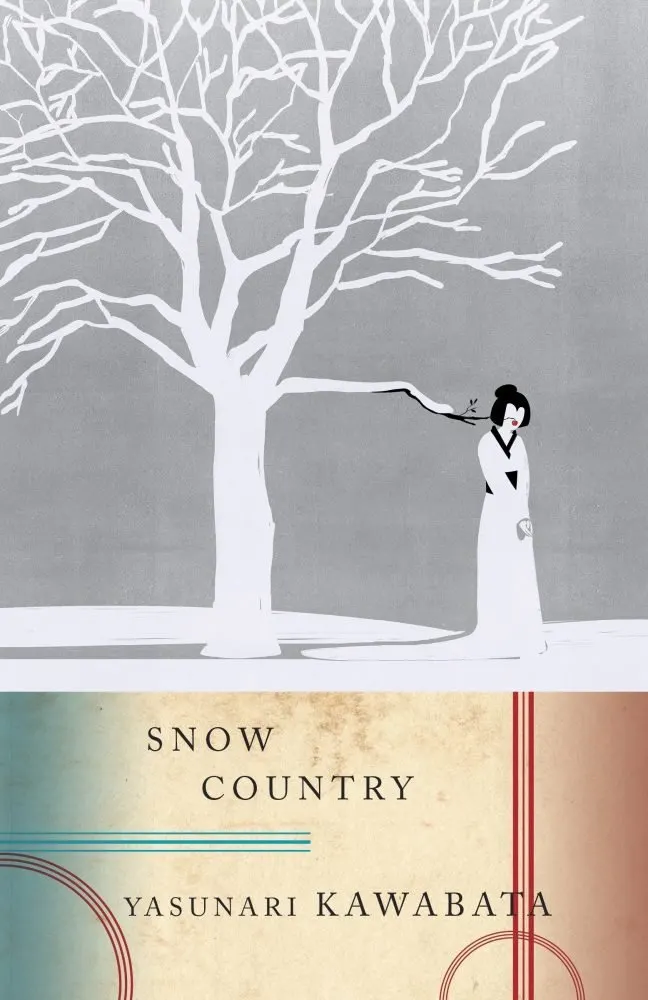
Many of his novels have the feel of a bell chime, opening with a loaded image that continues to resound throughout the rest of the story before drawing to a close with the final pages of the book.
For example, in his most famous work, Snow Country, the novel opens with a train ride through the mountainous countryside in which the narrator, staring out the window, superimposes the reflected face of a beautiful female passenger onto the darkening night sky and landscape outside.
Kawabata’s sparse yet wholly poetic opening is a masterstroke of foreshadowing in a novel that will confront the relationship between art, beauty, lust and love, in a near ethereal landscape, shown through a fragmented and sometimes drunken narration in which the main character finds himself unable to truly feel present and real before the beautiful geisha he has an affair with.
It reaches a harmony in the way the final image of the novel is of a brilliant moon hanging above that same night sky and illuminating the shocking climax.
If you know anything about Japanese literature, you’ll know that Kawabata penned some of the best Japanese books of all time, and Snow Country may be his finest work.
(Taken from our Author Spotlight on Yasunari Kawabata)
The Silent Cry by Kenzaburo Oe
Translated by John Bester
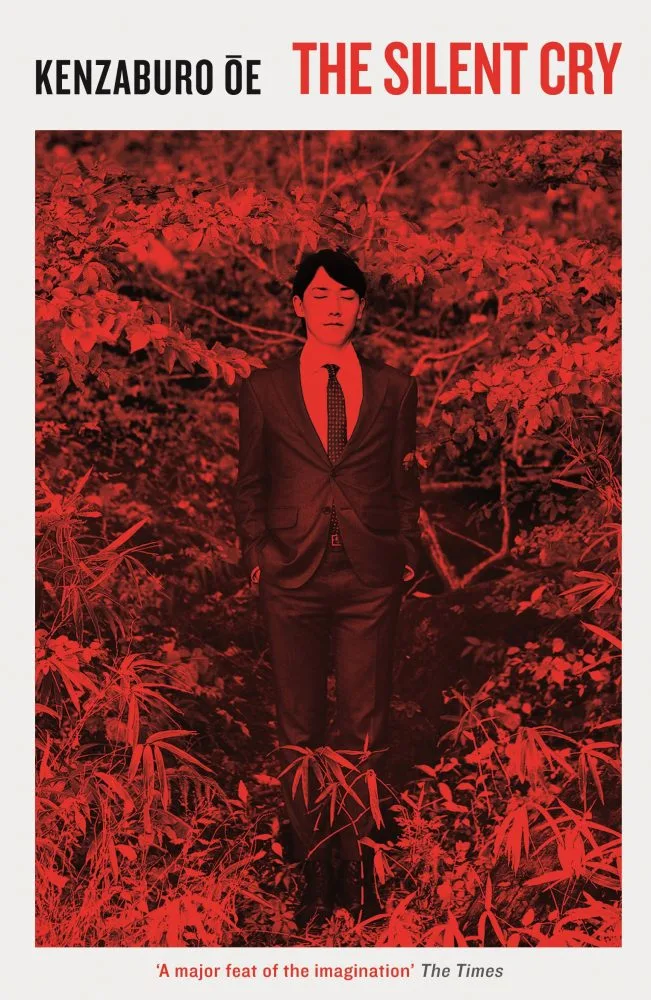
Oe’s writing stems from his interactions with his own Japan, but while Ishiguro’s Japan is one somewhat fantastical, Oe’s is one of political turmoil, social struggle, and the fight for change.
The Silent Cry tells the story of two brothers, the narrator and introverted academic Mitsusaburo, and his borderline-eccentric younger brother Takashi, who has just returned to Tokyo from New York.
After Mitsu and his wife make the choice to leave their handicapped infant child in an asylum, and Mitsu struggles with learning about the suicide of a friend (in a particularly and oddly erotic manner), he and his brother Takashi return to the village of their youth.
There, they do business and battle with a Korean slave-turned-CEO known as ‘the Emperor of Supermarkets’ who wishes to expand his empire.
Just like Kawabata above, this Nobel Prize winner has authored some of the best Japanese books of the 20th Century, and The Silent Cry is the best place to start reading him.
(Taken from our article on Japan’s Nobel Prize Winners)
I Am a Cat by Natsume Soseki
Translated by Graeme Wilson
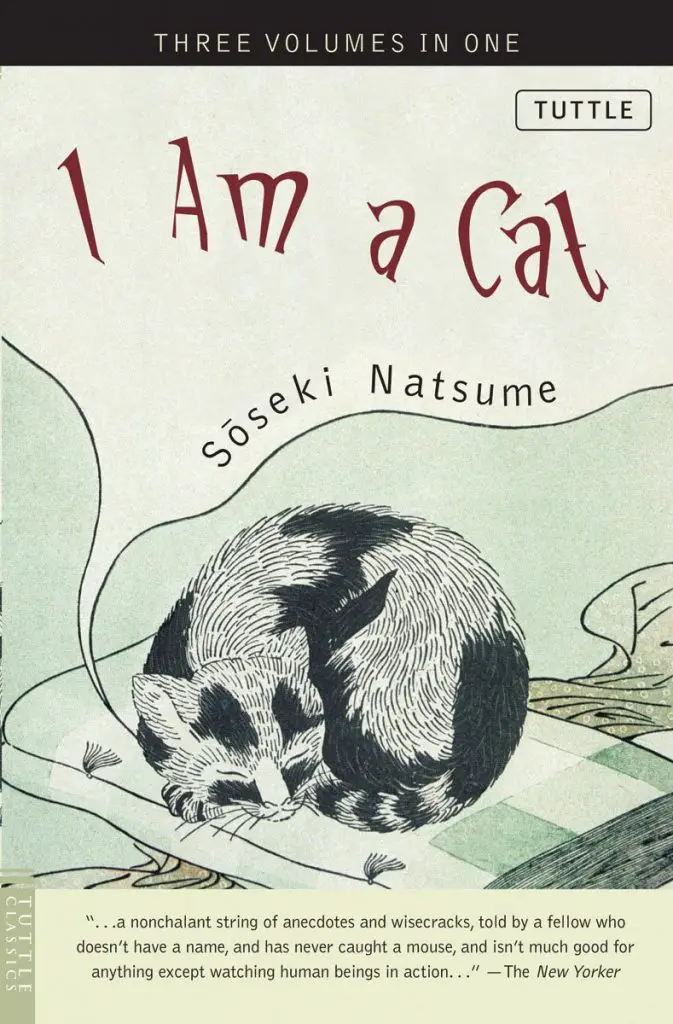
Natsume Soseki might be the most popular name in Japanese literature. When it comes to living authors, many first think of Haruki Murakami, but Soseki is certainly Japan’s most beloved author.
He was a cynical man in many ways, and wrote novels that got to the faulty hearts of people in a sometimes earnest and sometimes cheeky way.
His cheekiest novel is a work of satire written from the perspective of a cat – I am a Cat. The cat spends the novel relaying to us the events that go on in his house, which mostly concern his owner, a teacher who does his best to appear proud and to fit in with the noble middle classes of early 20th century Japan.
If you want a real classic of Japanese fiction, any book by Soseki will do the trick, but I Am a Cat is without a doubt his most light-hearted and witty piece of fiction, though it is a bit on the long side.
As early 20th Century Japanese literature goes, I Am a Cat is one of the best Japanese books you can buy.
Read More: The Best Japanese Books of 2020
Japanese Literary Fiction
Literary fiction means different things to different people, but generally it is mature, thought-provoking, grounded fiction based in reality. And Japan has literary fiction to spare.
Let’s look at some of the best Japanese books in the literary fiction genre by some of the best authors in Japan writing today.
Honeybees and Distant Thunder by Riku Onda

Riku Onda, author of The Aosawa Murders and Fish Swimming in Dappled Sunlight, explores the unique power of music to move the soul, bring out the best in us, and build community in her literary novel Honeybees and Distant Thunder.
This Japanese novel takes place over a single classical music competition, and we follow several protagonists — competing pianists and their judges — as they get to know themselves, each other, and their music.
Riku Onda has crafted here a love letter to music itself. She shows us, with stark beauty, how music enriches and moves us, how it brings us together, and how it shows off the human capacity for creativity and artistic expression.
Our protagonists are young musicians with personal baggage, hopes and dreams, insecurities, and talents to explore. We come to feel so much for each of them, while developing a deep appreciation for the art they create.
One of the most aesthetically beautiful Japanese novels you’ll ever read, Honeybees and Distant Thunder is a real masterpiece of Japanese literature.
Mild Vertigo by Mieko Kanai
Translated by Polly Barton
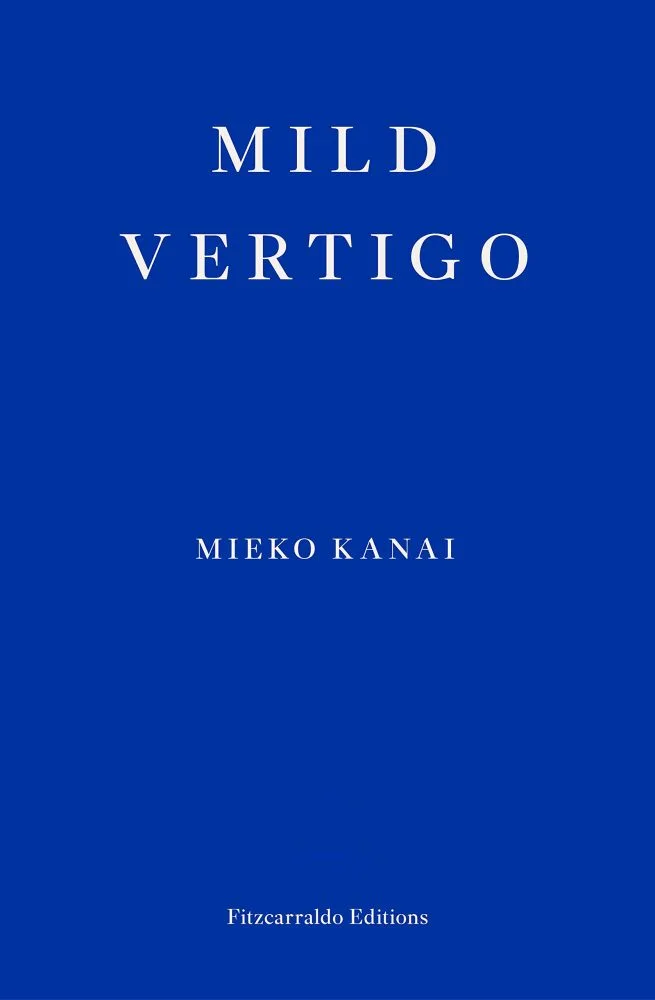
Mild Vertigo is a small but dense literary Japanese novel, originally written in the late ’90s, that presents us with a protagonist who is deeply compelling in her unremarkability.
Natsumi is a middle class Tokyo housewife with two sons. Her life is defined by her routines, her familial and neighbourly connections, and her physical space.
We follow her along in these routines as she gossips, makes private observations, and loses herself in long trains of thought.
Reminiscent of Lucy Ellman’s Ducks, Newburyport, this is a novel that invites readers to become lost in the mind of an extraordinarily ordinary woman who takes pride in her busy but simple life.
It’s an intense read, demanding an incredible amount of focus as long paragraphs stretch across multiple pages and thoughts blur into one another, and then into actions and even conversations.
It’s often difficult to tell where Natsumi’s interior and exterior worlds begin and end, as we become almost too intimate with her thoughts and behaviours, whilst also remaining at arm’s length.
As we get the feeling that we can never really know Natsumi, we have to wonder if she knows herself at all either.
A staggering work of literary fiction, Mild Vertigo is one of the most unique and rewarding Japanese books of recent years.
Buy a copy of Mild Vertigo here!
The Premonition by Banana Yoshimoto
Translated by Asa Yoneda
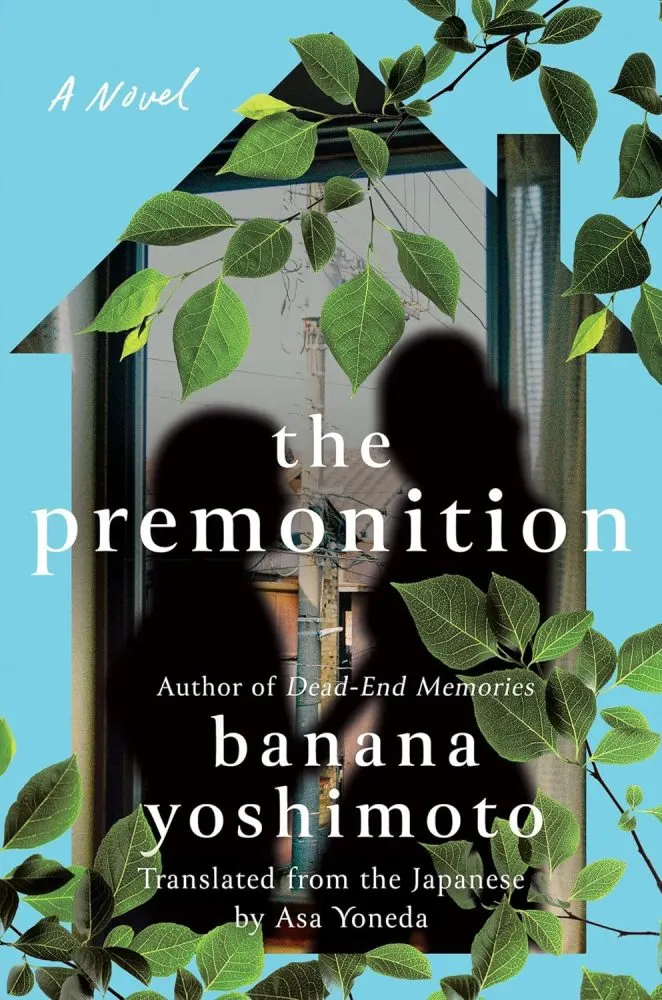
Banana Yoshimoto is a revered mainstay of Japanese literature, her books cherished by readers around the world. Her 1988 literary novella The Premonition is a perfect example of why she is so beloved.
This 100-page book follows a teenager named Yayoi, who has lived in peace and bliss with her parents and brother for, as far as she knows, her whole life.
But she also has a wayward and free-spirited young aunt whom she often likes to sneak out and visit. This aunt, Yukino, is a music teacher who has lived alone and lived her own way for several years.
While visiting her aunt, Yayoi recovers hidden memories that reshape what she has come to understand about her childhood and her family.
This is a story not so much about an unreliable narrator, but a narrator with unreliable memories and perspectives. It’s also a story of love, compassion, and the malleability of relationships.
A stunning piece of short literary fiction from the author of many of the best Japanese books of our time.
Buy a copy of The Premonition here!
In the Miso Soup by Ryu Murakami
Translated by Ralph McCarthy
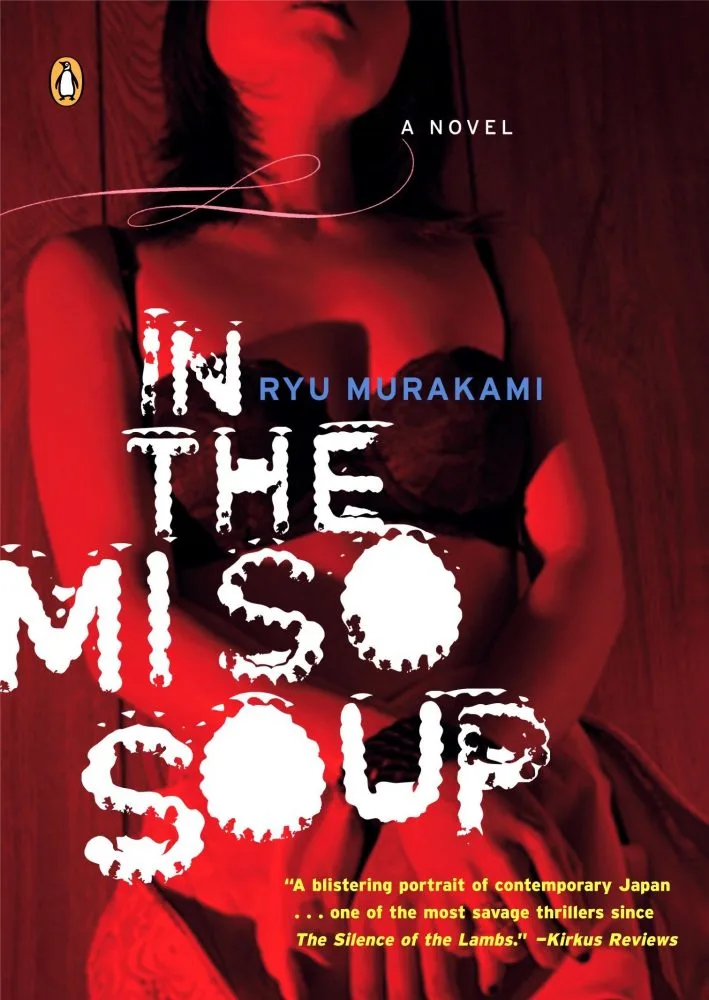
Ryu Murakami is often, unfairly, and unflatteringly referred to as ‘the other Murakami’. He also happens to have written some of the darkest and best Japanese books of our time.
His books are intensely clever and cynical examinations of the dark underbelly that always exists in Tokyo but rarely gets discussed in public or in the news. In The Miso Soup is a perfect example of exactly this.
Most of Murakami’s novels are set in and around the popular neon district of Shinjuku, where people shop, eat, and drink at all hours of the day. If you’ve ever played the Yakuza video games, this district is what Kamurocho was based off of.
As for In The Miso Soup, the novel concerns a young man named Kenji who works as a guide in Shinjuku, showing visitors all the best hangouts and nightlife. He sacrifices a night with his girlfriend in order to show around a strange foreigner who pays well but may harbour a dark secret.
Read More: Discover Kobe Abe – Japan’s Master of Surrealism
The Factory by Hiroko Oyamada
Translated by David Boyd

The Factory follows three protagonists who all work at an unspecified factory in Japan. The factory seems to make and distribute all manner of things and consumables, and its mass spans miles and miles.
A character remarks how the factory “really has it all, doesn’t it? Apartment complexes, supermarkets, a bowling alley, karaoke … It’s like a real town. It is. Much bigger than your average town, really … We’ve got our own shrine, with a priest and everything. All we’re missing now is a graveyard.”
And so, the factory has successfully become an inescapable place where humans live and work. Soon enough, they will die and be buried there. No longer can they separate home from work.
No longer can they escape work. Work provides everything for them. The metaphor here is clear; it’s clever, it’s frightening, it’s Kafkaesque.
For fans of the surreal and the strange, as well as the works of Franz Kafka, The Factory is one of the best Japanese books you can get your hands on.
(Taken from our review of The Factory)
Tokyo Ueno Station by Yu Miri
Translated by Morgan Giles
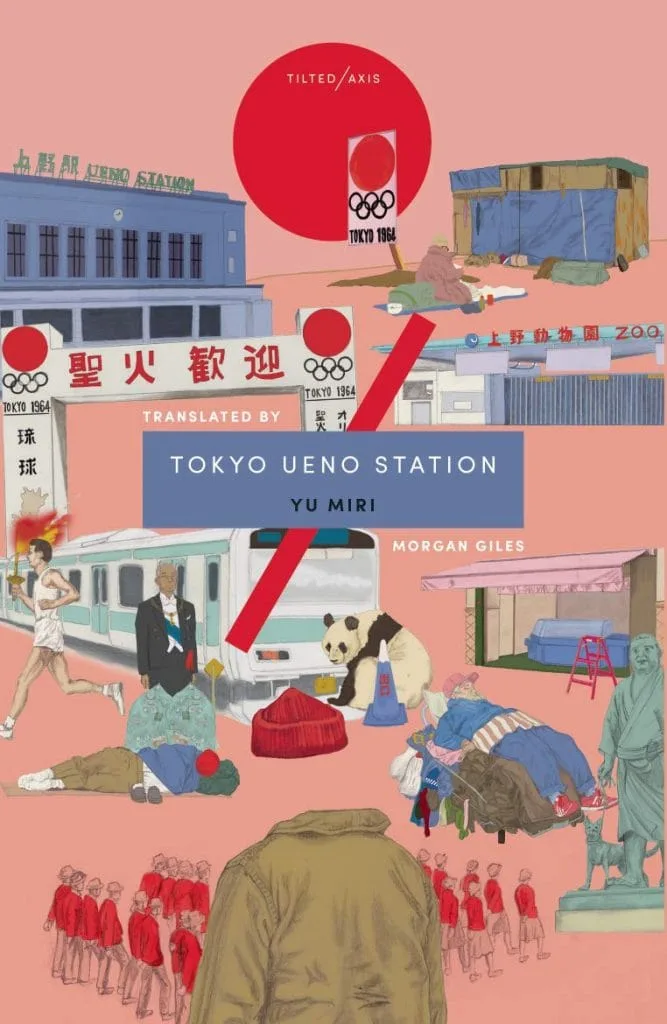
Yu Miri was born in Japan to Korean parents, and as such is a South Korean citizen and occasional recipient of racist bias and abuse in Japan.
Despite this, she has had a phenomenally successful career in Japan as both a playwright and a writer of prose.
Although born in Yokohama, Japan’s second largest city, she now lives in a small town in Fukushima, close to the Fukushima Daiichi nuclear power plant which suffered a meltdown following the 2011 Tohoku earthquake and tsunami which claimed thousands of lives.
Kazu, the Tokyo Ueno Station’s protagonist, was born in the same year as Japan’s emperor, and both men’s sons were born on the same day. While the emperor was born into the height of privilege, Kazu was born in rural Fukushima, a place that would later be ravaged by destruction in 2011.
While the emperor’s son would go on to lead a healthy life, Kazu’s son’s would be cut short, and Kazu himself would live out his final days as one of the many homeless barely surviving in a village of tents in Ueno Park.
The narrative of this exceptional novel tells the life of Kazu after death; his ghost haunts Ueno Park and often quietly observes the movements and conversations of strangers passing by.
These overheard conversations work as distractions which lead Kazu into, and then bring him back out of, flashbacks and memories of his wife, his son and daughter, and key events in his own life which are frequently tied to Ueno Station and the park.
Honestly, Tokyo Ueno Station is one of our favourite Japanese books. It also happens to be one of the very best Japanese books every written, end of.
(Taken from our review of Tokyo Ueno Station)
Heaven by Mieko Kawakami
Translated by Sam Bett and David Boyd

Written by the author of the Japanese feminist masterpiece Breasts and Eggs (found below), and translated by the same outstanding translation team, Heaven is a monumental piece of Japanese literary fiction, and arguably one of the best Japanese books ever written.
The protagonist of Heaven is a nameless fourteen-year-old schoolboy who is bullied endlessly and viciously. He soon finds companionship in Kojima, a female classmate who is also bullied. The two form a friendship that is, in itself at times, toxic and problematic.
Heaven is a difficult read; it shines a light on the aggressive behaviour of children, the hostile world that is middle school and high school, the discomfort of loneliness and isolation.
Heaven is harrowing, distressing, difficult, and so much more. But it demands the reader’s attention and respect nonetheless. It encourages kindness by showing us how difficult life can be, especially for helpless young people who must go to school, and are charged with surviving it like an injured soldier on a battlefield.
Mieko Kawakami pulls no punches here. She exposes the dark hearts of bullies, and warns us of the cruelties of life. But learning the lessons she teaches us can encourage empathy, kindness, and community.
Heaven is a true masterpiece and one of the best Japanese books by one of the best Japanese authors in existence.
Watch our full review of Heaven here!
Finger Bone by Hiroki Takahashi
Translated by Takami Nieda
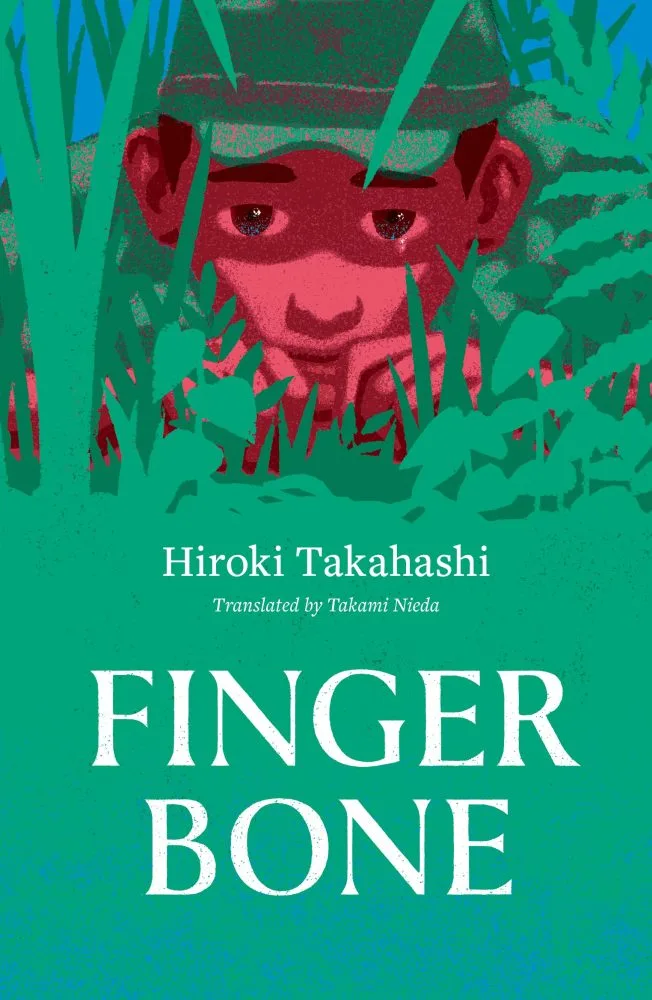
Novels about World War II are everywhere these days. Some are excellent; some are forgettable and even offensive.
Finger Bone is one of those rare novels that transcends its genre. It’s a masterpiece of Japanese war fiction that encourages us to wrestle with that age-old question: where is the good in warfare?
It’s 1942, and our nameless protagonist is a young, Japanese soldier in Papua New Guinea. As this short novel progresses, we watch him make and lose friends, connect with frightened locals, and shrug off injury and illness.
Taking place half in a field hospital and half in the thick of the jungle, Finger Bone is beautifully, harshly reminiscent of the poems of Wilfred Owen. A raw tale about the darkest, bleakest aspects of warfare.
This is about innocent men suffering fatal wounds, struggling to overcome malaria, forging bonds, and watching those bonds get severed without warning.
At no point are politics discussed in real detail, and that’s what makes us ponder the grand purpose of war. All we see here are men suffering, and trying to keep their spirits high, as well as those of their friends and comrades.
Few war novels have such a raw, powerful, painful effect on the reader as Finger Bone does, and it does so in such a short space of time. Read it in one sitting, and it’ll change you forever.
Buy a copy of Finger Bone here!
The Woman in the Purple Skirt by Natsuko Imamura
Translated by Lucy North
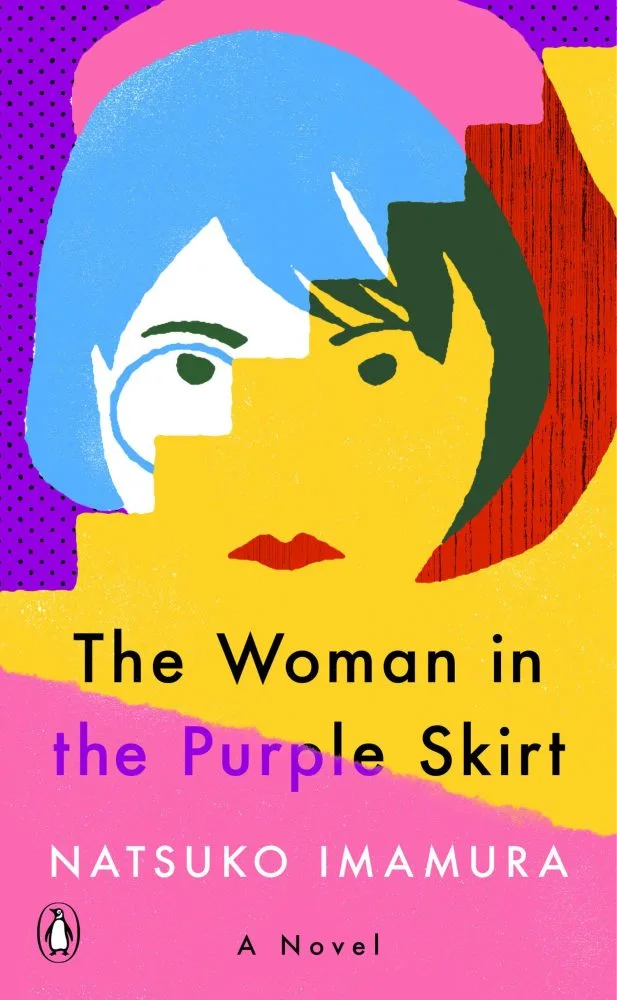
Reminiscent of the Tom Waits song What’s He Building, this is a novel of paranoia told from the perspective of the paranoid person. The titular Woman in the Purple Skirt is our protagonist, but our narrator is someone known only as the Woman in the Yellow Cardigan.
Our narrator works at a Tokyo hotel, and she spends her days observing the life of the Woman in the Purple Skirt. Desperate to know her better, she uses social puppetry to land the Woman in the Purple Skirt a job at her hotel.
From here, we watch the Woman in the Purple Skirt flourish professionally and socially, while our narrator remains paranoid, envious, and invisible. She dreams of knowing, loving, and maybe even being, the Woman in the Purple Skirt.
Living in our narrator’s head is intoxicating and stressful in equal measure; increasingly so as this short Japanese novels grows and builds. You wonder how a book like this one can possibly end; what kind of conclusion it could possibly reach.
This need drives you ever forward to reach the insane conclusion of one of the best Japanese books in translation of 2021.
Watch our full review of The Woman in the Purple Skirt here!
The Color of the Sky Is the Shape of the Heart by Chesil
Translated by Takami Nieda
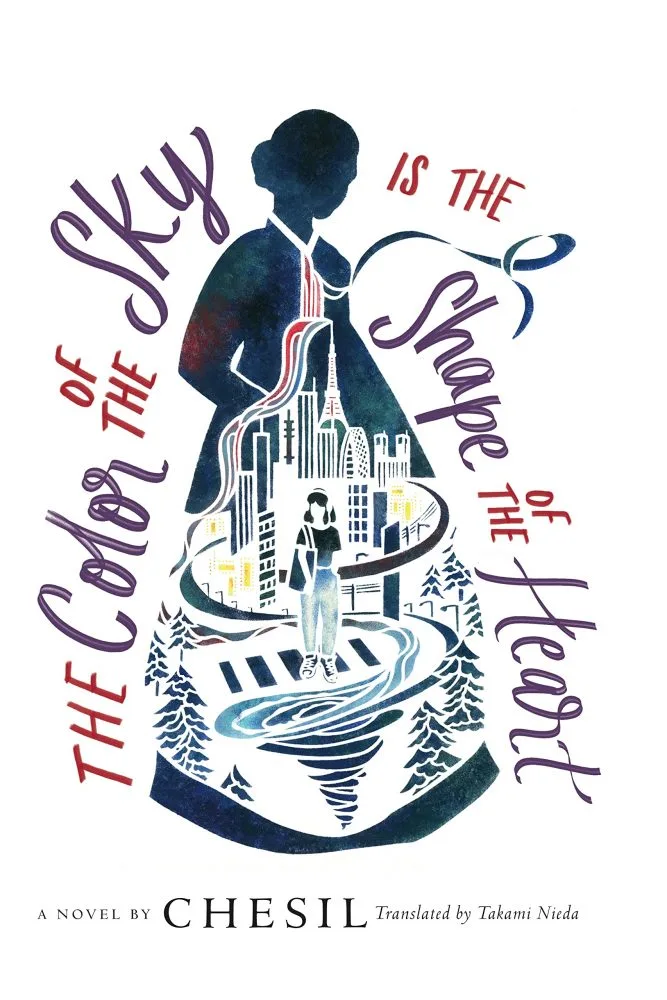
The Color of the Sky Is the Shape of the Heart is an illuminating and heartbreaking novel inspired by the author’s own childhood.
It tells the story of a Zainichi Korean (Korean citizens and their children, living and growing up in post-empire Japan).
Beginning in Oregon, where protagonist Ginny Park now lives, we are quickly taken back in time to her days at elementary and middle school in Japan, back when she was Jinhee.
Jinhee was born of Zainichi Korean parents in Japan. She speaks Japanese and no Korean. She went to a Japanese elementary school and faced discrimination. At a Korean middle school, trouble finds her again.
Through short vignette-style chapters, we learn about Jinhee’s youth, her experiences, and the hardships endured by Zainichi Koreans in Japan every single day.
The Color of the Sky Is the Shape of the Heart is not an easy book to read, but it encourages so much love and empathy from the reader.
It also sheds light on a subculture of Japanese people that are so seldom talked about, or even given a voice of their own.
What You Are Looking For Is in the Library by Michiko Aoyama
Translated by Alison Watts
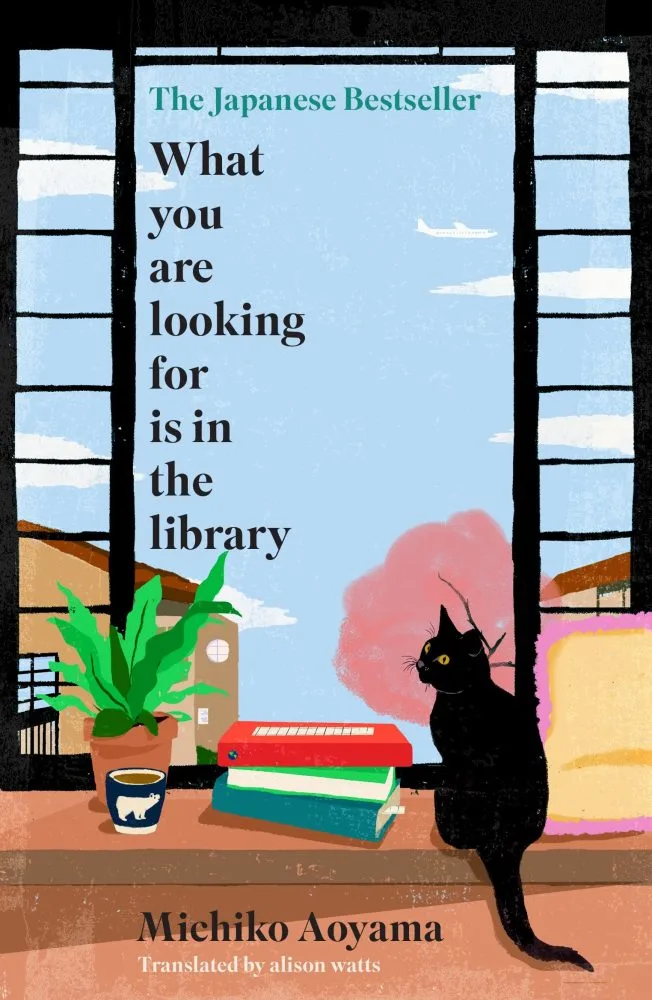
This is an incredibly sweet, charming, and wholesome novel about feeling lost, and finding your way with the help and support of others.
Five chapters tell the stories of five people who all live in the same ward of Tokyo. A young sales assistant from the countryside, a man who dreams of owning his own business, a forty-year-old mother, an unemployed NEET, and a newly-retired man.
During each of their tales, these protagonists will visit their local library and meet Sayuri Komachi, a patient and kind librarian who will give them what books they want, as well as one extra book that will help them get unstuck.
These books always have nothing to do with the jobs, interests, and personalities of our characters. For example, our man who dreams of owning a business will be given a biology book on earthworms.
But, upon reading these books, our protagonists will find inspiration and motivation; just enough to push them out of the fog they currently feel lost within.
The diversity of personality, situation, age, and background of each character adds so much variety and intrigue to this novel, and we are provided enough time to get to know them intimately.
We become attached to them, worry for them, and hope that they will find a better life. With Sayuri’s help, we know that they will.
Thanks to some outstanding, funny, dynamic translation work from Alison Watts, What You Are Looking For Is in the Library is a truly unique, compelling, sweet, kind, and wholesome Japanese novel.
The Tatami Galaxy by Tomihiko Morimi
Translated by Emily Balistrieri
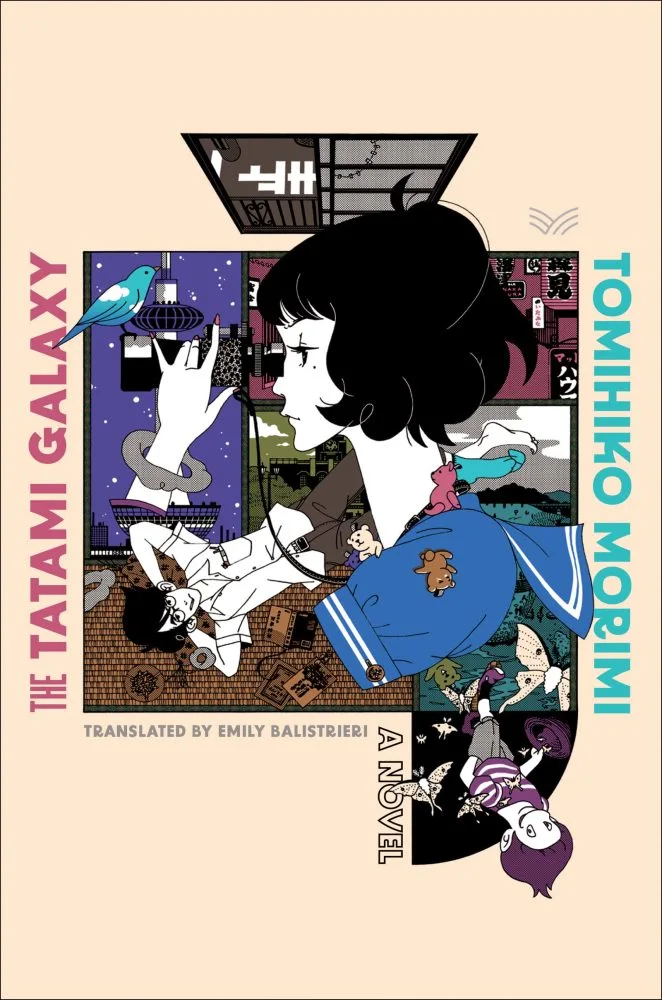
Across four acts, The Tatami Galaxy invites its readers to retread the same year in the life of a third-year university student in Kyoto.
This is a Groundhog Day narrative that explores the what-ifs and maybes of life.
Each act begins in the same way, with the same opening page of description, and then the subtle changes come. The same supporting characters exist but his relationship to them is always different.
In a way, we are searching for happiness or contentedness, or the secret to a “good” life. We watch him make mistakes and miss opportunities and then watch his life play out differently.
What remains the same throughout is him; he is still himself and his personality informs his decisions and actions.
The Tatami Galaxy is a novel that is at once ambitious and simple. The characters and events are easy to follow, and yet there is a dreamlike quality to the narrative (and an actual god shows up early on).
This is a book about life and what it means to live properly; and, of course, if any of that is even possible.
Idol, Burning by Rin Usami
Translated by Asa Yomeda
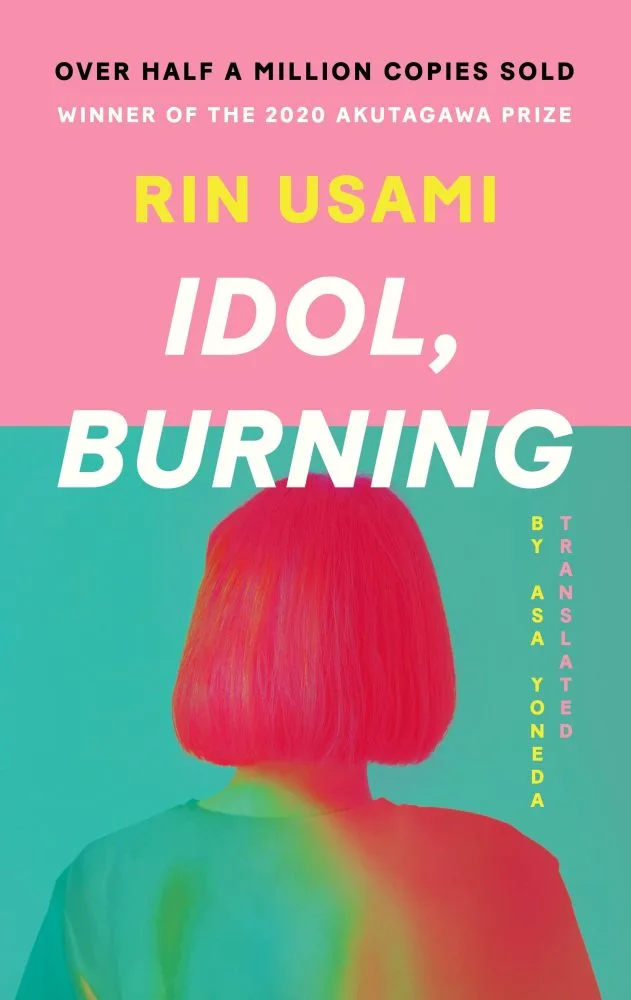
Written by a university student, this short and powerful Japanese novel won the 2020 Akutagawa Prize (Japan’s most prestigious literary prize).
Idol, Burning is told from the perspective of a high school girl whose favourite idol, a member of an all-male idol group, has been hit with enormous social backlash after punching a female fan.
Her idol, Masaki, is Akari’s entire life. Her own mediocre existence offers her nothing special and her grades aren’t great, and so she projects every bit of excitement onto Masaki Ueno.
This is a novel about idol culture and what it offers its fans. Idol, Burning examines cancel culture from several different sides and also shines a light on the healthy and unhealthy aspects of life as a dedicated idol fan.
Honest and transparent, Idol, Burning does a fantastic job of spotlighting the life of a young fan who has put her own life aside to focus all her love and attention on her oshi, her idol.
A bold and unique book that stands as one of the best Japanese books of the century so far.
The Boy and the Dog by Seishu Hase
Translated by Alison Watts
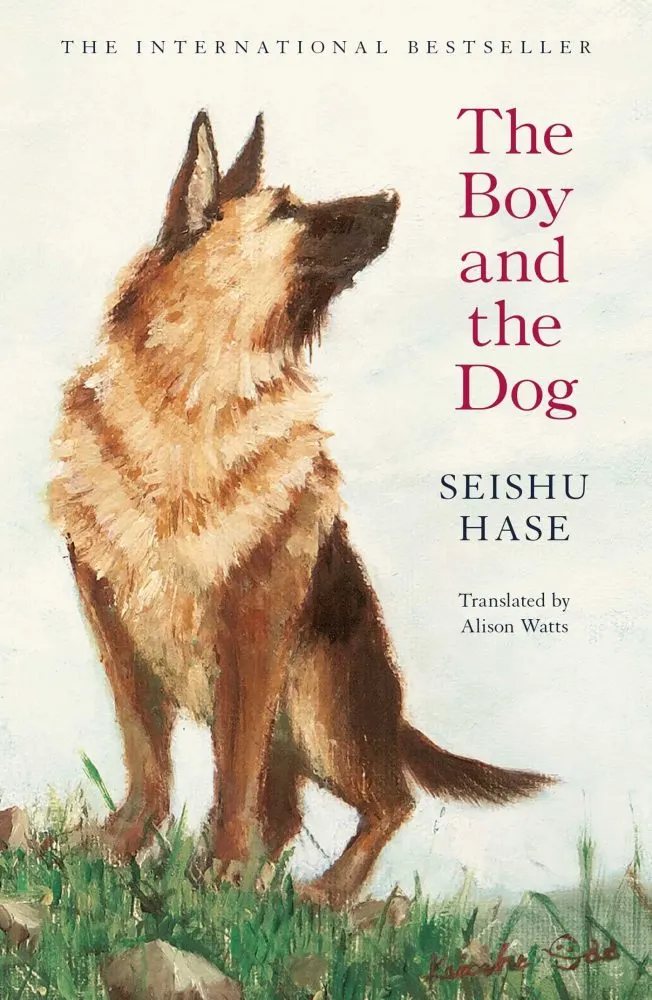
If you’re a dog person and you want to enjoy a wholesome, heart-rending Japanese novel about the relationship between people and their pets, this is the book for you.
The Boy and the Dog is a novel in six parts which traces the journey of a dog named Tamon, first found in the car park of a convenience store in Sendai following the devastating 2011 Tohoku earthquake.
Tamon clearly belongs to someone but they have presumably died or vanished, and yet the dog continues to look south. Over the course of the novel, Tamon passes through the lives of several different people as he slowly makes his way south. These people’s lives are irreversibly changed by Tamon’s presence, and each person is vastly different from the last.
This is a charming Japanese novel that beautifully demonstrates the power of a dog’s (or any pet’s) bond with its owner, and with the people who come into its life.
Cannibals by Shinya Tanaka
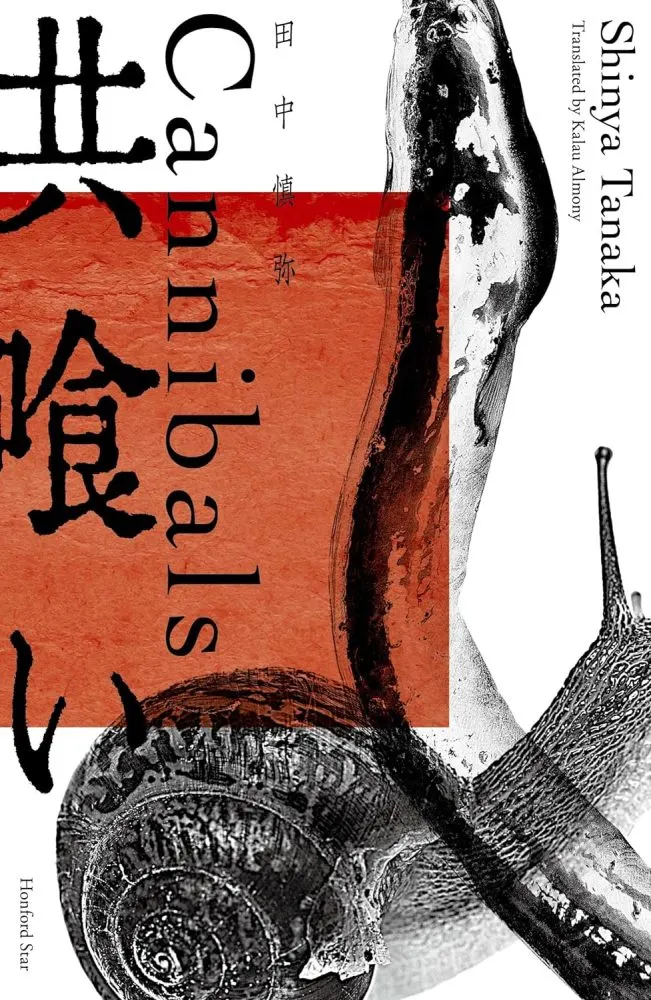
Cannibals is an undeniably difficult novella. Though it won the Akutagawa Prize and was adapted to film, it remains a harsh and triggering story of abuse that many readers will, understandably, be unable to struggle through. Our protagonist, Toma, was raised by his father—a serial abuser of women—and Toma’s great fear is becoming like his father; being swallowed up by an inescapable fate. It’s a raw novel that explores cycles of masculine abuse.
Toma’s mother is all but a stranger to him; she sits on the riverbank just across the water from her son, and cleans freshly-caught fish using a prosthetic arm. They interact like polite neighbours and all she talks about is what a monster Toma’s father is. And make no mistake; he is one. His current girlfriend is pregnant and considering running away at last. And Toma has a girlfriend of his own whom he is afraid he will soon hurt with his own hands.
This is a subtly surreal novel full of strange imagery. It is a claustrophobic fever dream of a story. The river cuts through their lives; phallic and aggressive imagery plagues Toma’s waking moments; he fears his fate, and when it comes for him, can he be redeemed? Cannibals poses large questions, and asks the reader to sit with them. But it is not an easy read by any means. Tread lightly.
Japanese Memoirs
Japanese authors are famous for their memoirs, as are many of the world’s great authors. Accomplished authors are able to take their artful flair for writing and language, and use those skills to imbue their own life stories with poetry and lyricism.
In Japanese literature , a popular genre of the 20th Century was shishosetsu (私小説), commonly translated as the I-novel; a form of autofiction which blends fact and memoir with embellishments and the rules of fiction.
What I Talk About When I Talk About Running by Haruki Murakami

Haruki Murakami is Japan’s most successful living author, both in his homeland and internationally. While he is best known for his surrealist, urban fantasy fiction, What I Talk About When I Talk About Running is a grounded, enlightening memoir.
This isn’t an I-novel, but rather a thin, yet broad, meditation on Murakami’s life, key events, and the things he holds most dear. As the title suggests, running is the book’s strongest focus. He discusses marathons he has run and why running has been such an integral part of his life for so long.
The book also recaps his former life running a jazz bar, his adoration for jazz music, his love of American literature, his work as a translator, his years spent living in the US, and so much more.
It’s a wonderful journey through the life of a fascinating writer, and one of the best Japanese books within the memoir genre.
An I-Novel by Minae Mizumura
Translated by Juliet Winters Carpenter
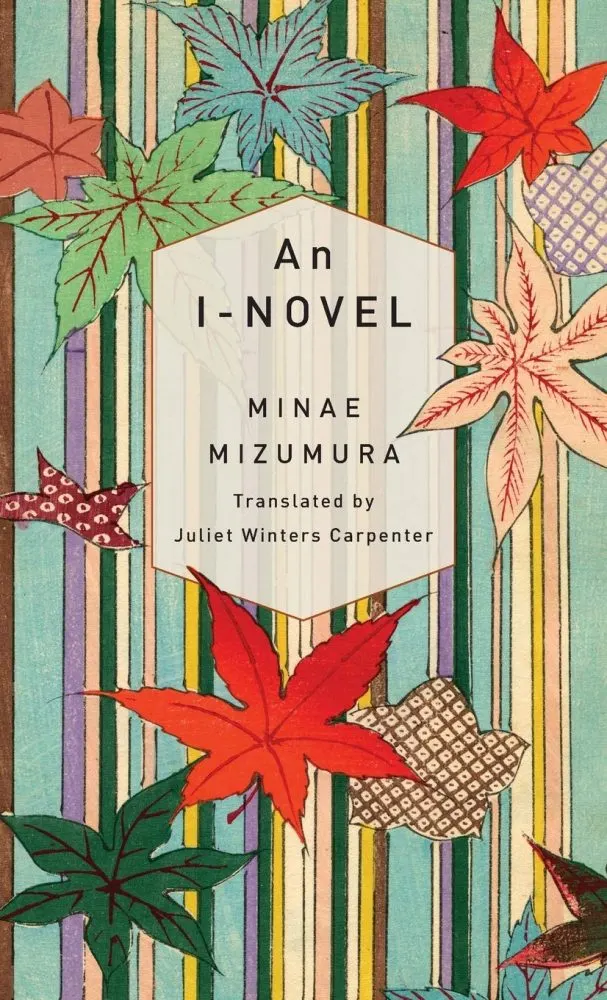
As the title suggests, this is a perfect example of the aforementioned shishosetsu (I-novel) genre. Mizumura’s An I-Novel is set during a single day but uses the rules of fiction to trace her life up until that point, jumping between moments as they become relevant.
Mizumura was born in Tokyo but her parents moved the family to New York City when she was twelve.
After twenty years living in the US, Mizumura one day makes the decision to become a writer and to return to Japan. She wishes to write a book in Japanese about her own life: this very same book. An I-Novel is a book about writing itself.
As for its contents and events, An I-Novel paints a vivid picture of Mizumura’s relationship with her sister, Nanae, and recounts various experiences of life in New York, as well as memories of her childhood in Japan.
This is a book about language, translation, personal expression, family, and belonging. It’s a comforting and uplifting read that gets to the heart of one person’s attachment to people and place. When it comes to the genre of shishosetsu, this is one of the very best Japanese books.
Watch our full review of An I-Novel here!
No Longer Human by Osamu Dazai
Translated by Donald Keene
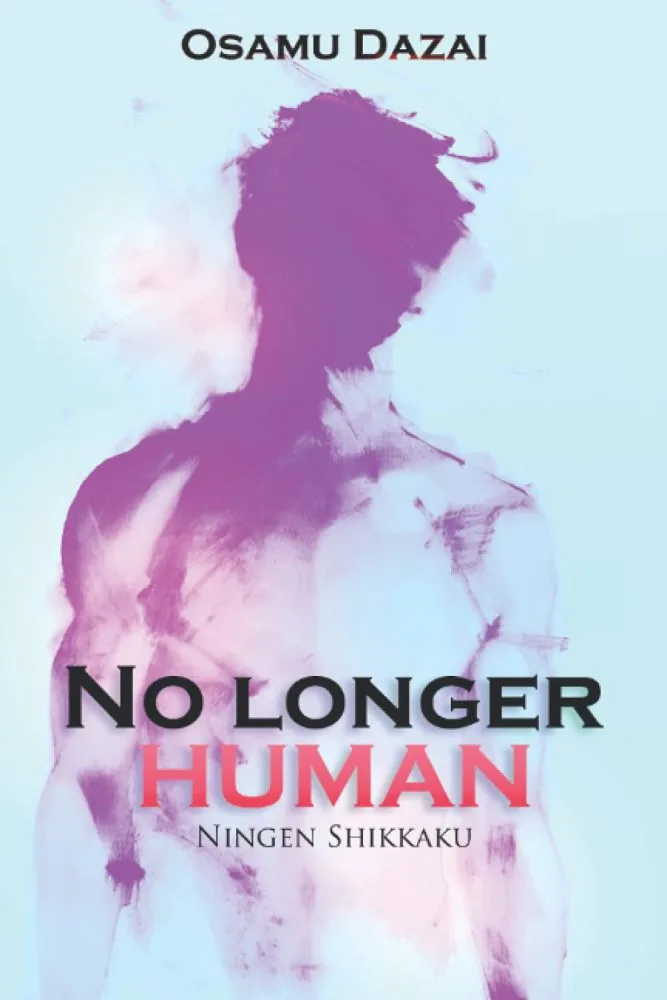
While Osamu Dazai’s final book, No Longer Human, is technically a novel, but it is also famously autobiographical and so falls comfortably under the umbrella of “I-novel”.
Inspired by his own life events, childhood, family dynamics, work, relationships, and most importantly, his way of seeing the world and people around him, No Longer Human is a heartbreaking masterpiece of autofiction, written shortly before Osamu Dazai committed suicide.
No Longer Human begins with a man finding three photos and describing them to us. The photos are of another person — our protagonist — at three different stages: childhood, adolescence, and adulthood. Each of these stages makes up a section of the novel.
Our protagonist, a stand-in for Dazai himself, sees ordinary society as something impossible to navigate. He paints horrifying pictures, eventually turns to drink, and becomes entirely destructive as an adult — towards himself and those around him.
This is a novel about a desperately sad person, ill equipped for even surviving daily life. He doesn’t understand people and people don’t understand him. He is selfish, gross, and unlikeable. But at his core, he is desperately sad and doomed to die.
No Longer Human is beautifully written, and a masterpiece of exposure: detailing the harsh reality of a life so difficult to live.
Japanese Horror Books
This category was tricky to fill in for the simple reason that, in Japan, horror often crosses over with other genres. Most horror novels are also political, feminist, speculative, or literary. Japan approaches horror with sharp wit and a political mind a lot of the time.
With that in mind, a few of the books in other categories on this list, such as Out and Japanese Ghost Stories, could also be considered horror books. The best Japanese books don’t always care about genre boundaries.
There is one writer in Japan who does horror better than anyone else. And, as well as being a writer, he is also an artist. Junji Ito is one of Japan’s greatest living mangaka and he is the country’s master of horror. So, let’s take a look at two of his finest works.
Read more with our list of essential horror manga that will make your blood run cold.
Shiver by Junji Ito
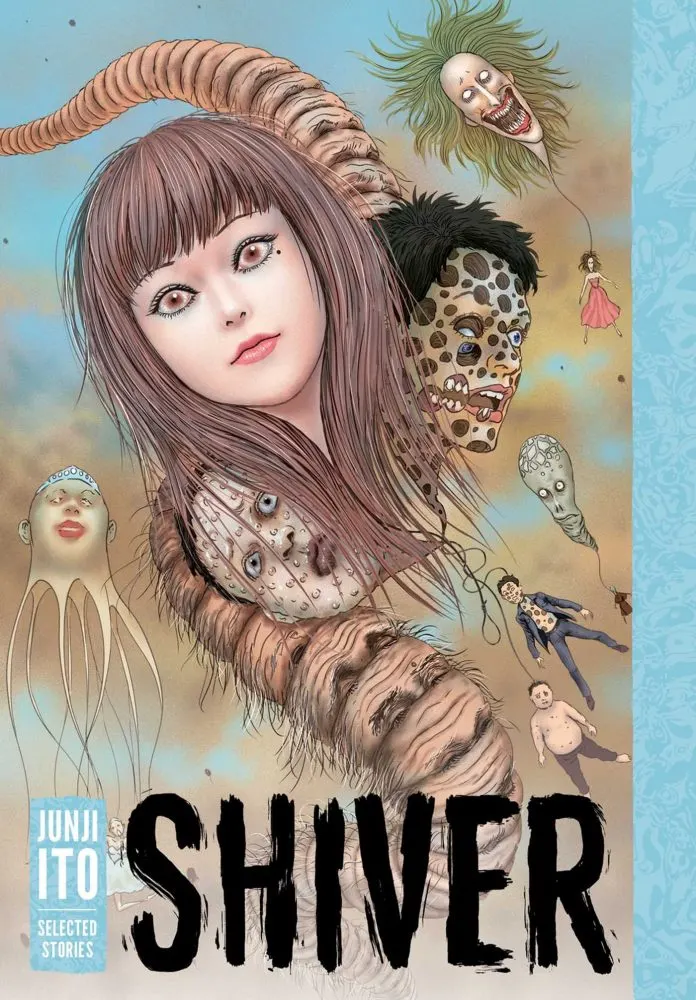
Shiver is Junji Ito at his finest. It isn’t a long-form manga story or an adaptation. Instead, Shiver is a collection of Junji Ito’s best short stories. And it’s in these stories where Ito is at his finest, narratively and artistically.
Most of Junji Ito’s stories introduce a terrifying concept like a swarm of balloons with human faces that hunt down the people they resemble and hang them, or a supermodel who may or may not eat people alive. They’re bitesize, eerie, grotesque, and heart stopping stories of absolute terror.
If you love manga and horror, Junji Ito has written most of the best Japanese books in that genre.
Read More: Terrifying Junji Ito Manga, Books, and Short Stories
Frankenstein by Junji Ito
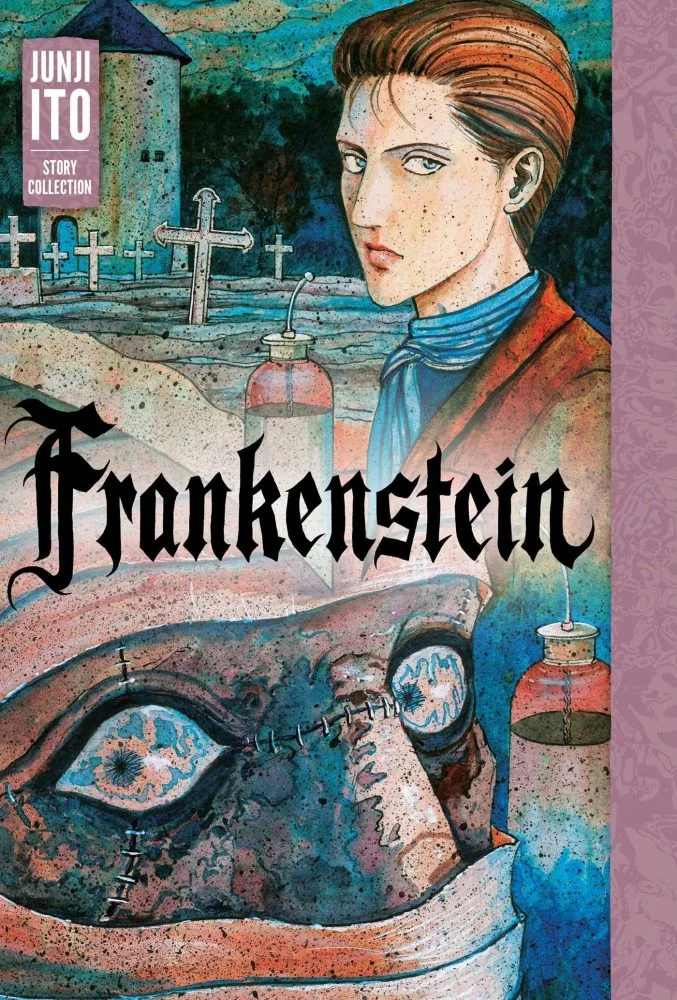
Junji Ito is Japan’s master of aesthetic horror. His stories are wholly his own, and the frightening power that they have is greater than that of most of the world’s most successful horror writers.
Ito has managed to disturb and shock me with greater effect than any horror writer I’ve ever read, and he deserves to be better known across the globe.
Maybe this adaptation of Shelley’s novel, created with real heart and soul, will be the thing to make him more of a household name. I certainly hope so; it’s bloody perfect.
(Taken from our review of Frankenstein)
Read More: Reading Manga: 11 Places to Begin
Japanese Fantasy Novels
When Japan approaches fantasy, it is often through manga and anime. There are a lot of incredible fantasy manga out there to enjoy, with my personal favourite being Kentaro Miura’s Berserk.
When it comes to Japanese novels and fiction, the border around the fantasy genre isn’t so clear cut. It is often more strange and abstract.
Here are two very different Japanese fantasy novels. One is a lesser-known historical fantasy sci-fi hybrid that is full of intrigue and fan. The other is a celebrated novel by Japan’s most famous author but is still undeniably a fantastical tale.
Lonely Castle in the Mirror by Mizuki Tsujimura
Translated by Philip Gabriel

Crossing a few genre boundaries, this is a piece of YA fantasy fiction that feels satisfyingly grounded and carries a strong, pertinent message.
Lonely Castle in the Mirror feels, at times, very Murakami-esque. It begins in Tokyo, with a young girl repeatedly finding excuses to avoid going to school because she’s being mercilessly bullied. One day, her bedroom mirror begins to shimmer; through it, she passes into the titular lonely castle.
In the castle, she finds six other Japanese teenagers, all of whom are avoiding school for their own personal reasons. They have been brought here by a girl in a wolf mask who tells them they have six months to find the key to a room. Find the key, and your wish will be granted.
Lonely Castle in the Mirror is a slow burn of a novel, focussing on its characters and their relationships more than on the plot and the grains of sand that fall away each day. It’s this focus on relationship that makes it such a unique and satisfying read.
Automatic Eve by Rokuro Inui
Translated by Matt Treyvaud

Automatic Eve is unbridled fun distilled into a Japanese fantasy novel. Set in an alternate history where the empirical line of succession is female rather than male, a technological marvel known as Eve is tangled in the lives of the various men we meet and follow as this political and personal novel ebbs and flows.
The fun of this novel comes in its unique setting of steampunk automation amongst samurai, shogun, and ancient castles. That, and the way the novel’s narrative shifts, twists, and turns page after page. An exciting and engaging book, and one of the best modern Japanese fantasy novels around.
The Wind-Up Bird Chronicle by Haruki Murakami
Translated by Jay Rubin

It’s no secret that Haruki Murakami has written some of the best Japanese books of all time. And in his library, The Wind-Up Bird Chronicle stands out as one of his finest. It might just be our favourite Murakami novel.
In The Wind-Up Bird Chronicle we are lost in the life of Toru Okada, a thirty-year-old suburban husband. Having recently left his job with a positive attitude toward change and a fresh start, it is jarring and contradictory to see that Toru’s attitude towards life is entirely passive and apathetic.
Toru has no plan and has seemingly taken to not caring as a means of coping with what may create in many others a deep and palpable anxiety.
This novel is an enormously abstract journey, taking place in a dry and still world. Toru Okada, our unsuccessful and futureless protagonist, is constantly at odds with his brother-in-law, the obviously psychopathic and hugely successful intellectual, Noboru Wataya.
Read More: Early Murakami – Why You Should Read the Rat Series
The Beast Player & The Beast Warrior by Nahoko Uehashi
Translated by Cathy Hirano
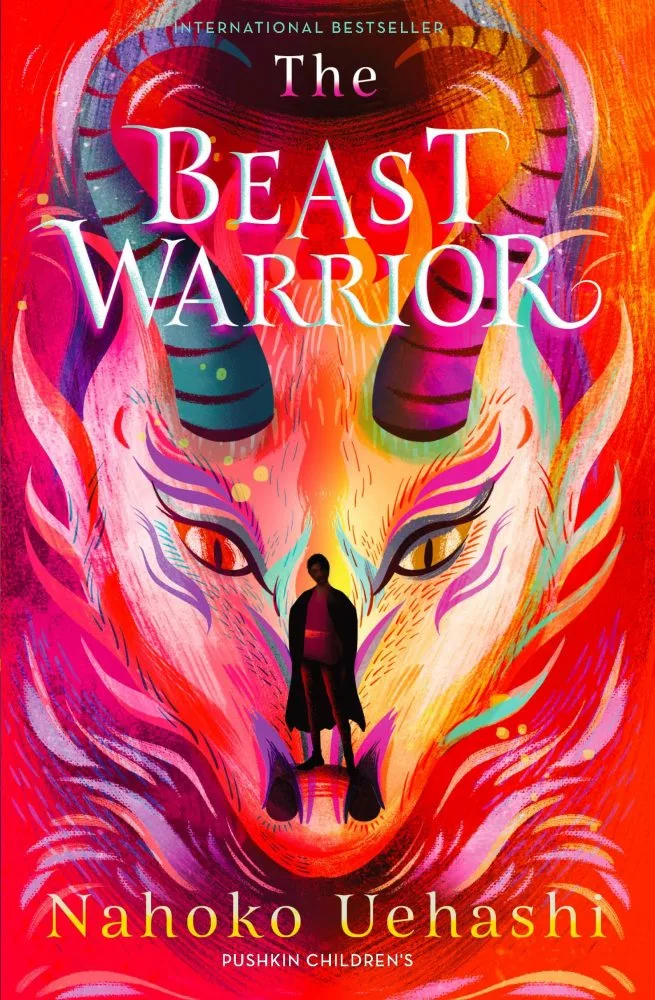
Since we haven’t put in a YA genre, count this pair of novels by Nahoko Uehashi as the best Japanese books in the YA genre. But they’re also outstanding Japanese fantasy novels.
The Beast Player is a 500 page YA fantasy epic from Japanese author Nahoko Uehashi. It tells the story of Elin, a young girl who grew up in a village full of caretakers who train and look after a herd of dangerous beasts known as Toda.
Elin’s mother, originally from a distant and mysterious tribe, is sentenced to death after the most elite beasts in the village all suddenly die at once under her care.
After escaping the village, Elin is raised by a wandering beekeeper and subsequently grows into adulthood at a sanctuary for another kind of dangerous creature: Royal Beasts.
The Beast Warrior is set roughly ten years after The Beast Player’s conclusion, with Elin now around thirty years old, married to a supporting character from the first book, and mother to an eight-year-old boy named Jesse.
The book begins with Elin being called to investigate a slew of Toda deaths which closely mirror those that drove the story of the first book. Here, we finally get an answer to these strange Toda deaths.
If you’re looking for the best Japanese books in the fantasy genre, and you love YA fantasy in particular, these books are what you’re looking for.
Read our full review of The Beast Warrior here!
Japanese Mystery Novels
If you’re an anime fan, you’ll know that Japan does mystery and crime fiction really, really well. Manga and anime like Death Note and Monster are beloved amongst fans of the mystery and crime genres. But what about Japanese novels?
In the 20th century, many fledgling Japanese authors fell in love with the popular European crime fiction that had swept the world, especially the works of Agatha Christie and Arthur Conan Doyle.
Their charming detectives and locked-room mysteries sparked the imaginations of many Japanese writers. Here are three Japanese mystery novels born from the fires of that spark.
Japanese mystery novels represent some of the best books in the mystery genre and some of the best Japanese books, full stop, at least in terms of plotting and sheer entertainment. And here are some of the mystery genre’s finest.
If you want more, you can read our detailed list of Japanese mystery novels right here.
The Decagon House Murders by Yukito Ayatsuji
Translated by Ho-Ling Wong
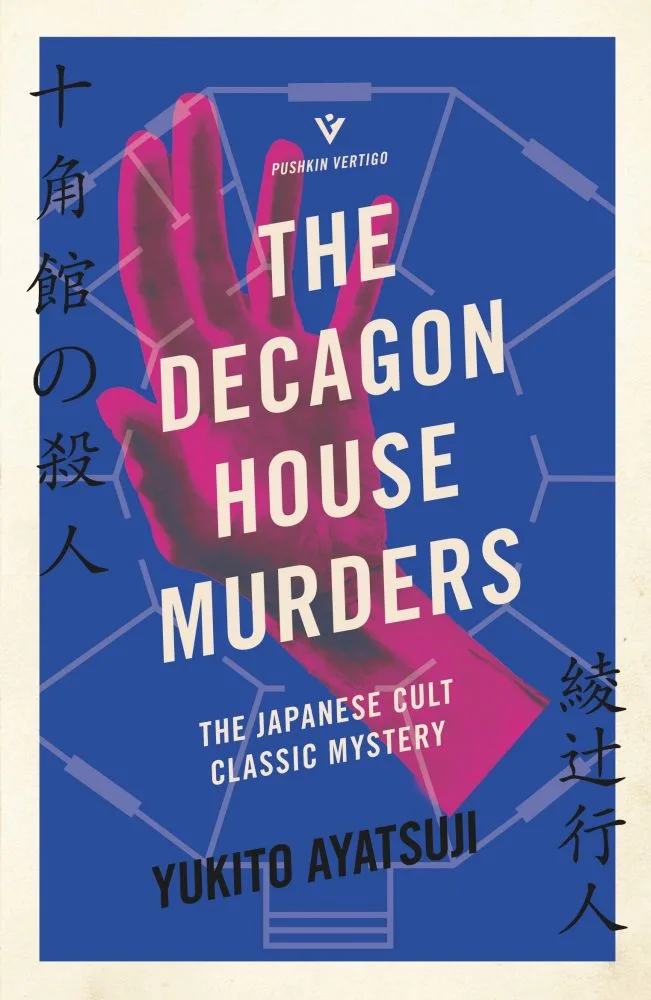
Paying homage to what many consider Agatha Christie’s magnum opus, And Then There Were None, Yukito Ayatsuji’s The Decagon House Murders is one of the finest, purest, smartest Japanese mystery novels available in translation.
The Decagon House Murders follows a group of university students who are all members of a murder-mystery club, in which they read classics, discuss them, and write/read their own mystery tales.
One day, they visit an island off the coast of Japan which was the site of a recent tragedy, as well as the former home of a very wealthy man.
After a night spent on the island, they wake up to an elaborate setup which promises that they will die one by one.
This novel also flits between the island and a friend left behind on the mainland who is attempting to piece together what is happening by contacting relations of the island’s former owner/architect.
If you’re a fan of classic mystery novels, The Decagon House Murders is one of the best Japanese books in that genre.
The Honjin Murders by Seishi Yokomizo
Translated by Louise Heal Kawai
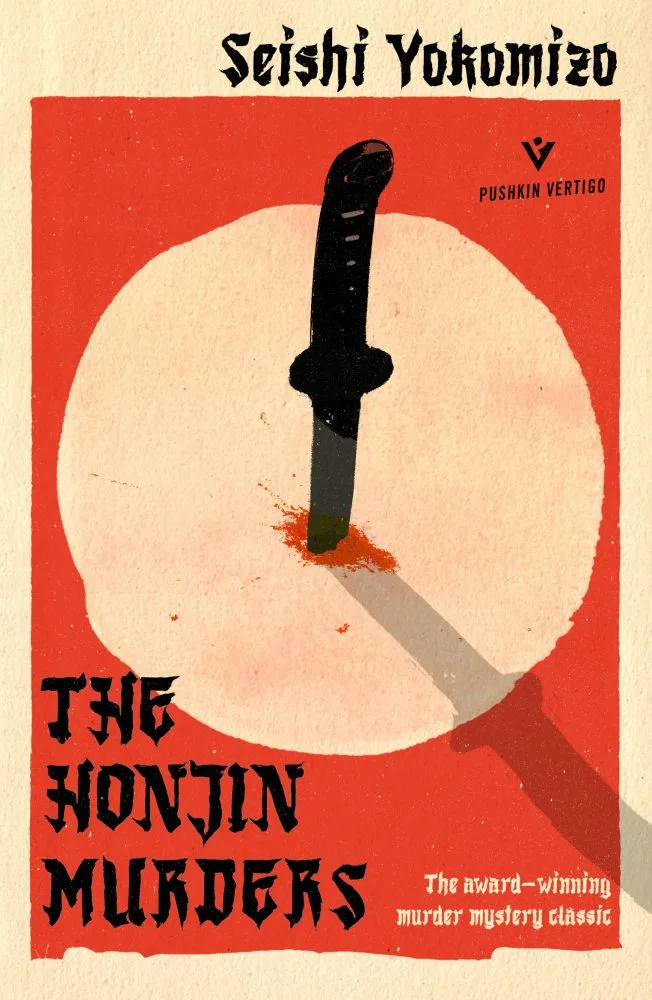
Seishi Yokomizo, who died in Tokyo back in 1981, carved out a real legacy with his series of detective stories. In the character of Kosuke Kindaichi – first introduced here in The Honjin Murders (originally published in 1946) – Yokomizo invented his own Sherlock Holmes.
The Ichiyanagi family are a proud, wealthy, high-class family, and one of their sons, Kenzo, is due to marry the young Katsuko. On the night of their wedding, they are murdered by a mysterious assailant who flees into the night, leaving nothing but a handprint and a bloodied katana in the snow.
The mystery of The Honjin Murders is, of course, finding out whodunnit. Who killed the newlyweds; is it someone we know or a stranger; what is their motivation; how did they get in and out?
One of the first and also one of the best Japanese books in the fantasy genre, The Honjin Murders is a mystery masterpiece.
(Taken from our review of The Honjin Murders)
Read More: The Best Japanese Mystery Novels
Murder in the Crooked House by Soji Shimada
Translated by Louise Heal Kawai

Both this and the above novel were translated by Louise Heal Kawai and published by Pushkin Vertigo, who reliably put out the very best of international literature, especially Japanese mystery novels.
Murder in the Crooked House is a locked room mystery which, also like The Honjin Murders, is set in the snowy wilderness of rural Japan.
This is another novel with a near superhuman detective capable of solving any mystery. But this house of dead ends and secrets may just prove too much for him when an impossible murder needs to be solved.
If you’re looking to build a collection of the best Japanese books in the mystery genre, this book needs to be in that collection.
Japanese Feminist Literature
There is a strange dichotomy in the world of Japanese literature: novels by men are often picked up and translated into English faster than those by women.
And yet, most of Japan’s best writers are women and, therefore, most of the best Japanese books are feminist.
Of course, not all of these Japanese women writers write explicitly feminist literature, but many of them do. The most legendary example being the fierce and fantastic Natsuo Kirino.
Here is one of Kirino’s finest books (you’ll find another further down), and another two books that — honestly and without any hyperbole — may go down in history as two of the best Japanese books ever written.
Diary of a Void by Emi Yagi
Translated by Lucy North and David Boyd
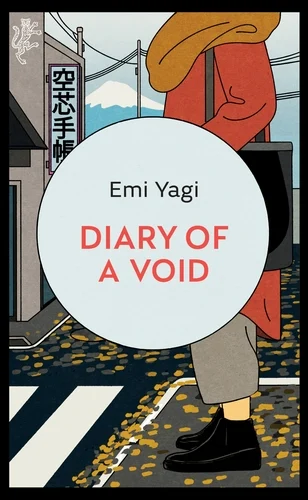
Diary of a Void is a sarcastic, witty, hilarious short novel about the ways in which society’s treatment of women depends on their situation and their worth.
Our protagonist, Shibata, is a twenty-something office worker who, by virtue of being the only woman in her office, is treated like a dog’s body who must fetch coffee for the men.
Driven to breaking point, she one day lies and says she can’t do this anymore because she’s pregnant (which, in reality, she isn’t).
However, committed to this new lie, Shibata starts noticing her life improve. Men treat her with more kindness; she is given permission to gain weight and look after herself.
She makes new friends, joins a yoga class, and spoils herself because she suddenly feels worthy of something; accepted and useful and given a reasonable amount of respect.
Written and translated with humour, Diary of a Void is a Japanese novel with teeth and claws.
Breasts and Eggs by Mieko Kawakami
Translated by Sam Bett & David Boyd
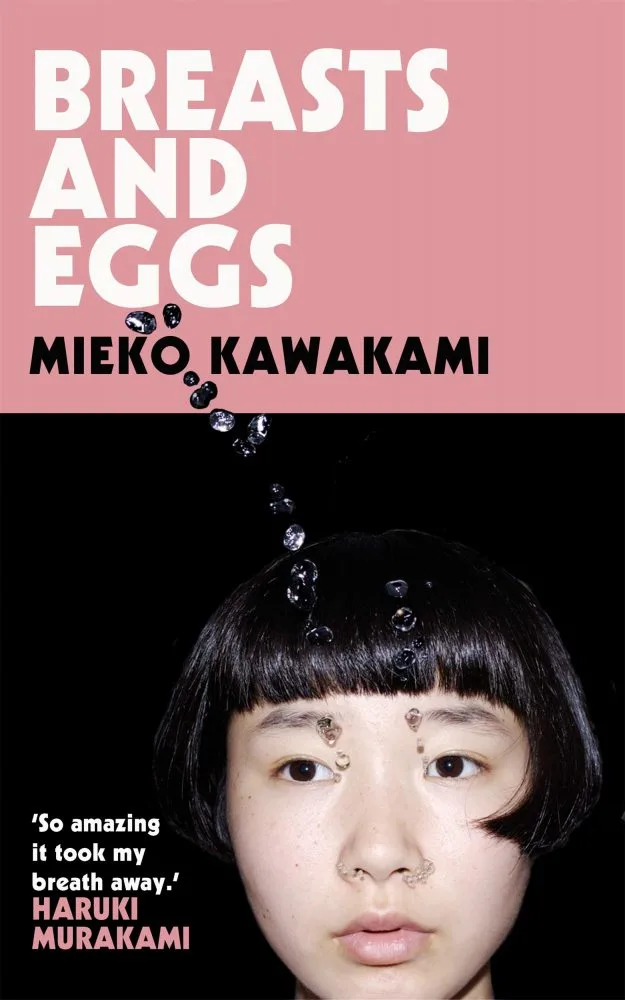
Inarguably one of the best Japanese books of modern times — perhaps even of all time — Breasts and Eggs is an absolute feminist masterpiece.
Originally a novella, the English translation of Breasts and Eggs took the original and its longer sequel, and mashed them into one sizeable novel.
Breasts and Eggs follows the story of Nastsuko, an Osaka-born resident of Tokyo who has spent her adult life trying to make it as a published author.
The first book focusses on a short visit by Natsuko’s more extroverted sister and that sister’s daughter. The daughter has fallen mute and her mother is in Tokyo for breast implants.
The frustrations of what is said and not said here make for a compelling family drama.
In the book’s second story, Natsuko has made it as an author but now dreams of being a mother, though she has no real wish for a partner to share her life with. Both stories explore how womanhood is defined and how we find purpose in our lives, especially as modern women.
Breasts and Eggs is one of the great Japanese feminist masterpieces, our favourite novel of 2020, and one of the best Japanese books you can read in English right now.
All the Lovers in the Night by Mieko Kawakami
Translated by Sam Bett & David Boyd
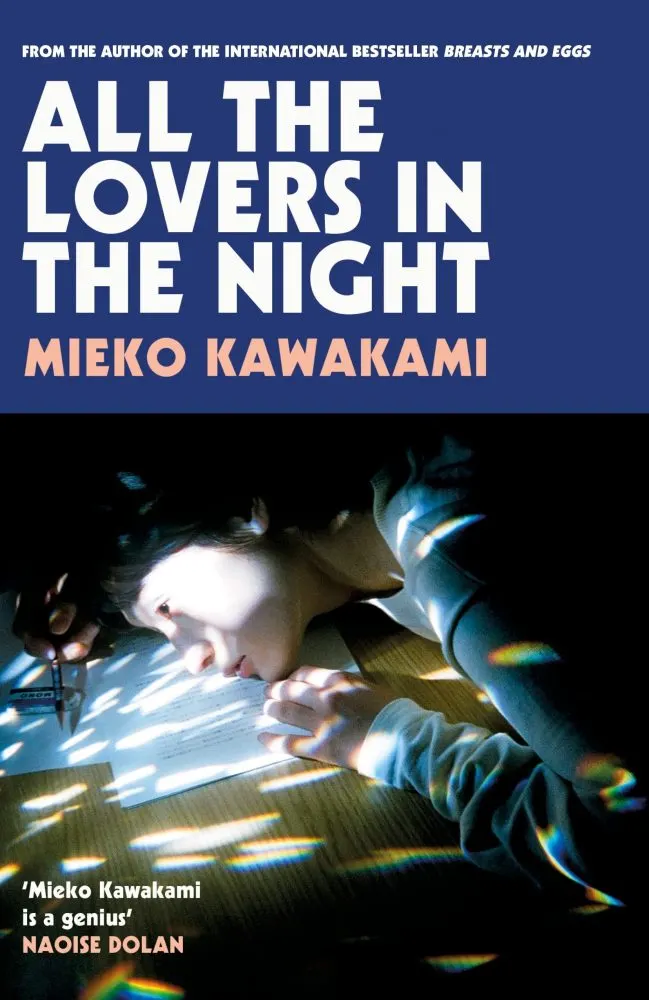
As David McNeill said in a Guardian interview with the author, “Kawakami has made her name articulating womanhood in Japan better than any living author.”
After the enormous international success of Breasts and Eggs, Kawakami then brought us All the Lovers in the Night; another feminist critique of modern Japanese life.
All the Lovers in the Night tells the story of Fuyuko, a woman in her thirties who works from home as a freelance proofreader and doing very little else with her time. She is burdened with childhood trauma and unsure of how best to fit into ordinary society.
Fuyuko is given direction by her one colleague, Hijiri, a girlboss type who tells Fuyuko the right way to succeed as a modern woman.
Fuyuko attempts to enrol in evening classes, to drink socially, to dress differently, but all of this puts enormous strain on her mental and emotional wellbeing.
Like the protagonist of Sayaka Murata’s Convenience Store Woman, Fuyuko struggles to understand and cope with the patriarchal expectations put upon modern women, whether they be professional or social.
All the Lovers in the Night demonstrates the pain that comes from trying to fit into a world that doesn’t work for you. A biting and powerful Japanese feminist novel by one of modern Japan’s great writers.
Watch my full video review of All the Lovers in the Night
Out by Natsuo Kirino
Translated by Stephen Snyder
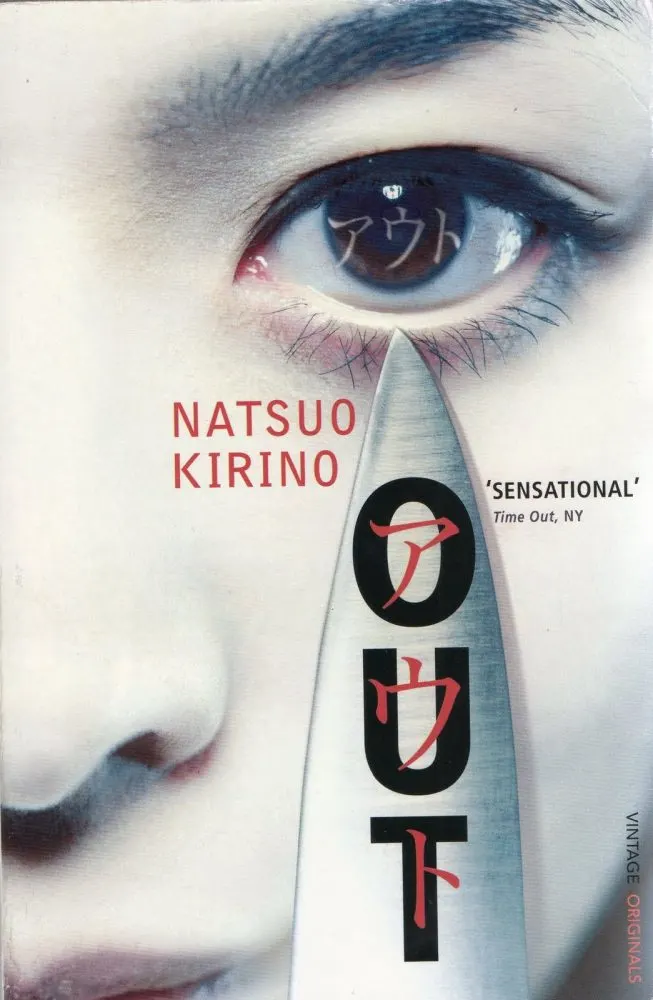
As I’ve said, there’s no writer of Japanese feminist literature like Natsuo Kirino, and Out is one of her most ferocious, unrestrained novels. It’s also another contender for one of the best Japanese books of modern times.
Out follows the story of a group of women who all work the same dead-end job in a factory, exhausted by also having to be mother and wives to useless, unfaithful husbands.
When one of our four women protagonists snaps and murders her husband, she turns to her fellow factory worker for help covering her tracks.
Soon enough they will need to fend off not only the police but the local yakuza crime family. Out is an angry, exhilarating Japanese crime novel and a masterpiece of Japanese feminist literature.
A Woman of Pleasure by Kiyoko Murata
Translated by Juliet Winters Carpenter

Set in 1903, during the Meiji Restoration of Japan, A Woman of Pleasure is a feminist novel that paints a vivid picture of the lives of courtesans. The novel primarily follows Aoi Ichi, a girl from a poor island community sold, like so many girls her age, by her impoverished parents. Through Ichi’s eyes, we learn about the world of courtesans in post-Sengoku Japan, and we meet women who struggle, fall, and fight back.
The entire novel is building towards a courtesan strike, following other workers’ strikes which are taking place around the country. But until then, Ichi will learn to read and write, will make friends and learn from her elders. She will write beautiful letters, diary entries, and poetry. She will prove herself to be sweet, endearing, and hopeful. She will ride the waves and wait for her time to break free.
A Woman of Pleasure is an eye-opening story; dark but full of angst and vibrancy, with so much knowledge to impart on the reader. One of the great feminist Japanese novels.
Buy a copy of A Woman of Pleasure here!
Convenience Store Woman by Sayaka Murata
Translated by Ginny Tapley Takemori
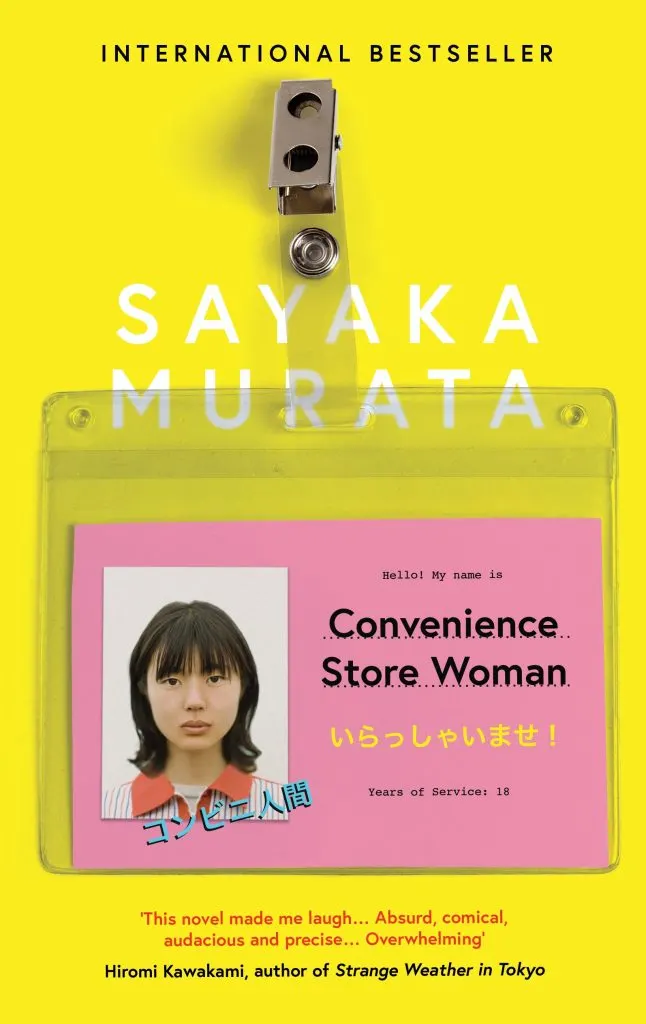
Keiko Furukura is thirty-six and has worked part-time in the same convenience store for eighteen years (as, in fact, has her creator). She has seen eight managers – whom she refers to only by their numbers – and more co-workers than she could count.
She is entirely content with her life, and has never asked for anything more; not a better job, more money, nor even a partner to share her life with.
Read More: Books to Read Before You Visit Japan
She is a cog in the convenience store machine, as much a part of the furniture as the fluorescent bulbs and door jingles (even the Japanese title, ‘Konbini Ningen’ or ‘Convenience Store Human’, reflects this with clarity: Keiko is not a woman, she is a human part of the store machine).
As a result, this cog has never managed to fit the greater machine we call ‘modern life’.
Convenience Store Woman is an astonishing novel and the new gold standard for the best Japanese books.
(Taken from our review of Convenience Store Woman)
Black Box by Shiori Ito
Translated by Allison Markin Powell

This is one of those Japanese books that could fit into a few different genres. It’s Japanese non-fiction and a Japanese memoir, but it is most importantly one of the best Japanese books to inspire change in the patriarchal system of Japan, and the world at large.
In 2015, journalist and world-traveller Shiori Ito was assaulted by a prominent TV journalist. The two went out for food and drinks, she passed out suddenly, and when she awoke she was in a hotel room being attacked.
In Black Box, Ito takes this traumatic experience and turns it into a rallying cry for justice, change, and equality. The book sparked Japan’s #metoo movement; it exists to encourage positive change in the judiciary system, in laws, in police behaviour, and in public discussion about assault.
While this is a difficult read, Black Box ultimately exists as a kind of manifesto for change. It spotlights the sexism at the heart of our legal and political systems, and it uses a heartbreaking, tragic personal story to demonstrate how these systems are broken, while also suggesting how they can be fixed.
Butter by Asako Yuzuki
Translated by Polly Barton
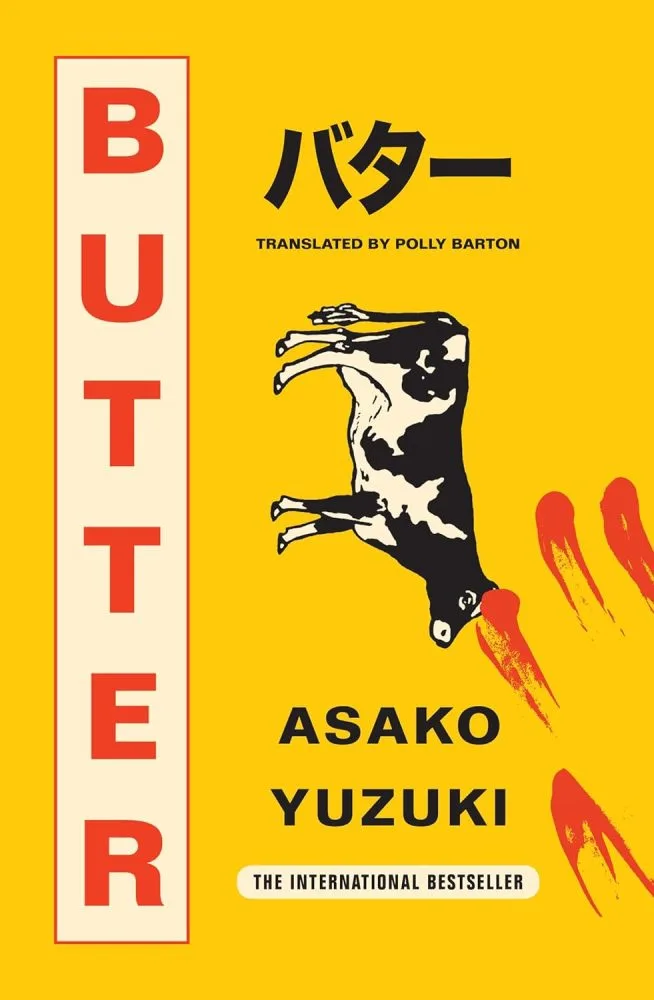
Butter is a deceptively deep novel. On the surface, it presents itself as a thriller, but its darker waters hide provoking themes of isolation, gender roles, societal expectations, body image, and autonomy. Our protagonist, Rika, is a thirty-something journalist who is attempting to get an exclusive interview with a woman who is on trial for the murder of three men—all former lovers.
Rika manages to get that interview by appealing to Kajii’s love for good food. They gradually get to know one another as they bond over recipes, culinary history, and restaurant recommendations. But Rika soon falls under Kajii’s spell, enthralled as she is by this woman who claims to hate feminism and yet uses her femininity and her social savvy to get what she wants, especially from men.
While it isn’t nearly as literary as the works of Mieko Kawakami, or as subversive and radical as those of Sayaka Murata, Butter is a smart and thought-provoking work of feminist fiction that encourages the reader to consider the role of the woman under our patriarchal and capitalist systems.
Japanese Queer Literature
While LGBTQ+ literature in Japan is often relegated to manga and light novels (at least in terms of what we get in translation), that’s all slowly changing.
More and more great queer Japanese lit is coming out in all manner of forms. Here is some of the best queer Japanese literature you can get your hands on right now.
Solo Dance by Li Kotomi
Translated by Arthur Reiji Morris
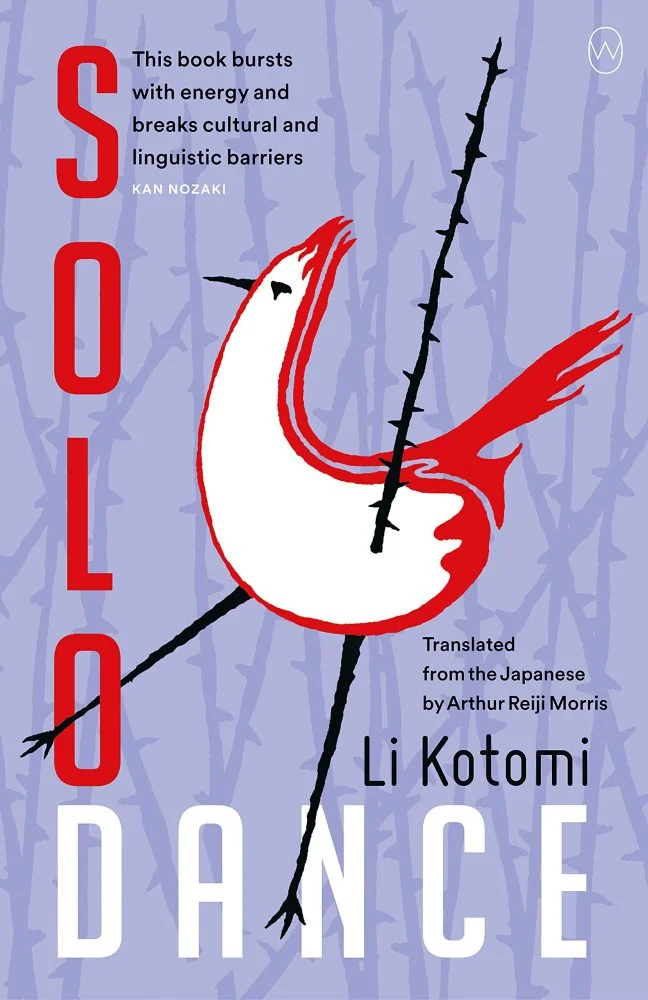
Li Kotomi is a Taiwanese, Tokyo-based author who writes in both Mandarin and Japanese. Her novel Solo Dance (originally written in Japanese) tells the story of a Taiwanese woman in her late twenties, currently working a corporate job in Tokyo.
Cho Norie is a lesbian; she is also depressed and obsessed with death. She reads Chinese and Japanese authors who also struggled with their mental health and often committed suicide.
She left Taiwan for Japan after a series of traumatic experiences, but she remains herself. She remains troubled, burdened, and broken.
Solo Dance is about the damage done by modern-day homophobia. It’s about the fear and paranoia we live with, and the invisible scars we wear.
Norie is an incredibly empathetic character that many of us will understand deeply. She is moving through life like someone crawling through brambles. She is frightened and barely hanging on.
As we learn more about her past and her present, we learn to love and care for Norie, and we urge for her to go on living, to learn and love and heal.
My Brother’s Husband by Gengoroh Tagame
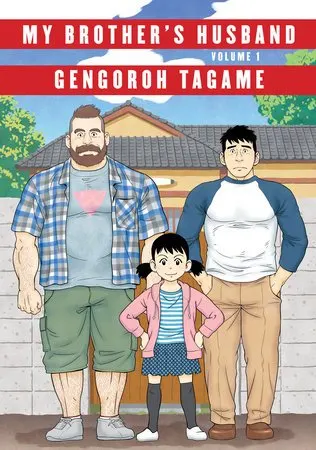
Queer literature is big in Japan. You just need to know where to find it. And where is that? In manga. Queer manga is everywhere, and it ranges from literary to romantic to pornographic and everything in-between.
For the bulk of his career, fifty-four-year-old manga artist Gengoroh Tagame has focussed his creative energy into producing gay erotica.
He has been a driving force for gay men in the world of Japanese art, influencing countless gay writers and artists.
My Brother’s Husband exists as an allegory for Japan’s traditionalist views of the other, specifically LGBTQ+ people.
The manga tells the story of a Japanese man who, after his brother died, is visited by his brother’s husband: a friendly Canadian man named Mike.
With the help of his jolly daughter, our protagonist must learn to get over his homophobia and learn to love in a way he never has before.
(Taken from our review of My Brother’s Husband)
My Lesbian Experience With Loneliness by Kabi Nagata
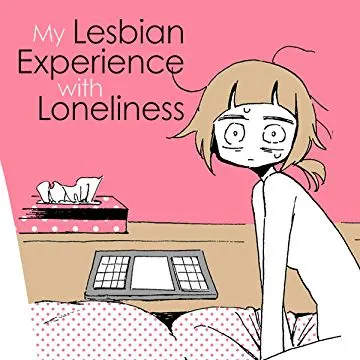
My Lesbian Experience with Loneliness is the story of Kabi, a woman who decided against attending university, and spent her early twenties in a haze of depression, drifting through jobs at stores and bakeries and, when she finds the energy to do so, she writes manga.
She neither avoids nor seeks out friends, companionship, or sex. She simply exists.
She begins with one eating disorder, and moves onto another. She loses her job, and finds another. She lives with her parents, and often fails to find the will to leave her bedroom.
Eventually, as we see in the flash-forward opening pages, she arrives, age twenty-eight, at a turning point.
She decides to hire a female escort and a room at a love hotel, in order to learn and understand all that she believes she has missed out on in her youth.
These sexual desires and experiences which she has distorted into fear and anxiety in her mind.
(Taken from our review of My Lesbian Experience with Loneliness)
Japanese Dystopian Fiction
Dystopian fiction has had something of a renaissance in recent years. Perhaps it has something to do with the times we’re living through. Japan is no different.
Some of the smartest, most insightful and introspective dystopian novels are coming out of Japan right now, and here are two of our favourites.
The Memory Police by Yoko Ogawa
Translated by Stephen Snyder
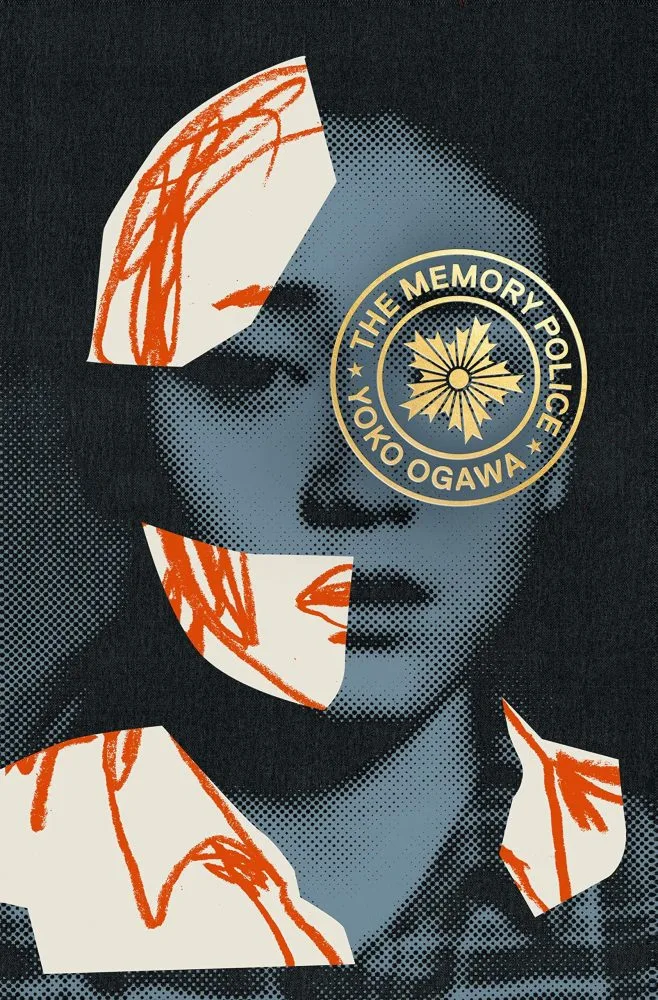
The Memory Police is set on a nameless island of almost entirely nameless people — a popular practice in modern Japanese literature. On this island, things disappear at random.
What this means is that people on the island will often wake up to find something either vanished out of existence, like roses, perfume, or ribbons; or things still physically exist but they no longer work or be used, like the only ferry which can leave the island.
Once something has disappeared, it is soon after forgotten by almost everyone on the island, and then they may go on with their lives, unburdened by the loss of the disappeared thing.
Two kinds of people do not forget, though: the Memory Police, and a small minority of civilians who are taken away by the Memory Police if it is discovered that they are failing to forget what has disappeared.
Our protagonist is an author whose mother kept mementos of things that have disappeared and was eventually taken away by the Memory Police. Our author, however, does forget and lives in fear of what may vanish next.
Yoko Ogawa is one of our favourite Japanese authors and hers are some of the best Japanese books out there. The Memory Police is nothing short of a masterpiece.
(Taken from our review of The Memory Police)
The Last Children of Tokyo by Yoko Tawada
Translated by Margaret Mitsutani
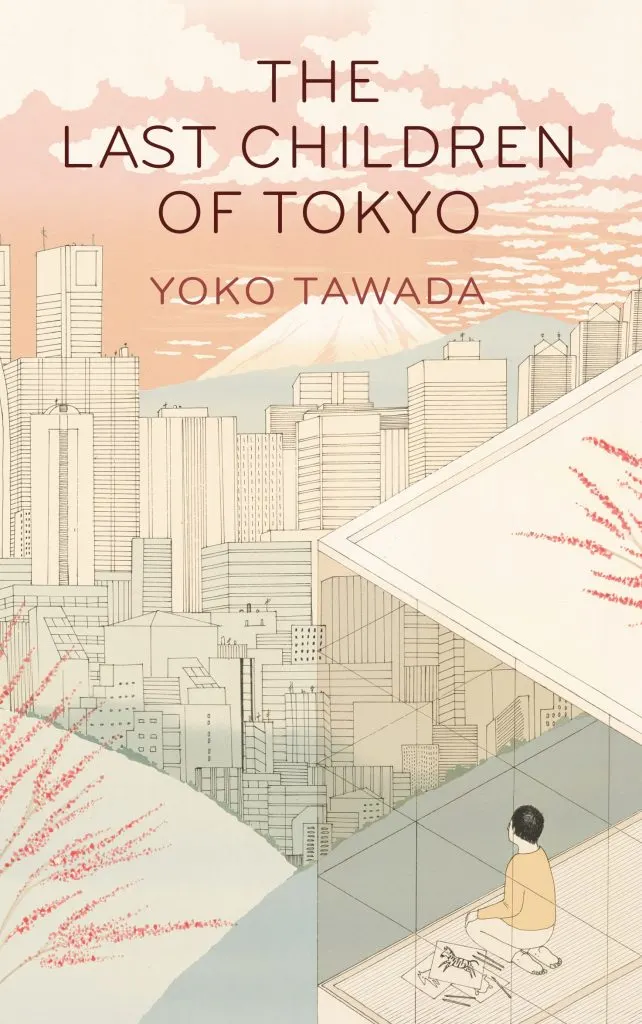
In recent years Japan has become known globally for its aging population, a generation living longer than that of any other nation (mostly due to its healthy foods and lifestyle trends) and also for its rapidly declining birth rates (thanks to, well, a lot of things – long and stressful working weeks and a disinterest in sex among young people are often cited as two popular reasons).
These rising and falling figures make for scary reading in the papers, and even scarier stories.
As The Last Children of Tokyo begins, Yoshiro, a retired author, has passed his hundredth birthday and still spends every morning out jogging with his rent-a-dog (there are few animals left in Japan, and certainly no wild ones).
His great-grandson Mumei, however, was born, like every member of his generation, with grey hair and failing health. His life expectancy is poor, and his bones will likely fail him before he exits his teens.
If you’re looking for excellent dystopian fiction, this is one of the best Japanese books in that genre.
(Taken from our review of The Last Children of Tokyo)
Japanese Historical Fiction
Many Japanese writers choose to write in the present, whenever their own present might be or have been. It’s in the world of manga where you find a lot more historical fiction (such as Vinland Saga, Vagabond, and Kingdom).
That said, here are two of the best Japanese books within the genre of Japanese historical fiction for you to enjoy. One was even recently made into a beautiful and moving film by Martin Scorsese, and the other is by my personal favourite author of all time.
An Artist of the Floating World by Kazuo Ishiguro
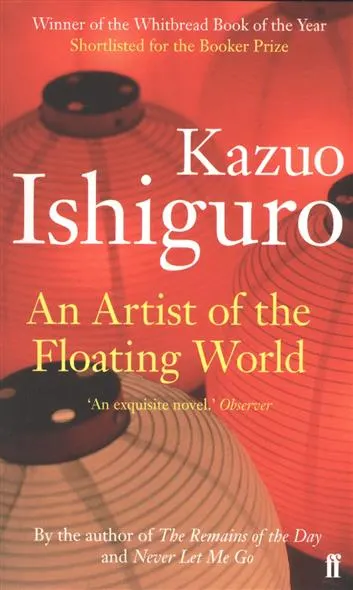
Some readers familiar with Ishiguro’s work might immediately want to call me out by pointing out that he is, in fact, a British author.
And that’s true, but Ishiguro is also Japanese; he was born there and lived his early years there before moving to the UK.
So, while he does write in English, he is Japanese and has an authority to write about Japan, which makes this book one of the best Japanese books of all time.
Ishiguro is also, as I’ve already mentioned, my favourite author, and An Artist of the Floating World is my favourite Ishiguro novel. It’s a complex piece of historical fiction set after the events of World War II.
Our protagonist, Ono, was once a great painter, but during the events of WWII he began making right-wing propaganda art which, after the war ended, discredited him as a traitor to the ideals and morals of Japan.
This novel is an intense exploration of personal politics, moral duty, and betrayal. It follows Ono closely and allows us time to live with him and his decisions, as well as how his family and friends now treat him.
An absolute masterpiece of Japanese historical fiction.
Silence by Shusaku Endo
Translated by William Johnston

Western religious is not popular in Japan, but it is not unheard of. Shusaku Endo was a Japanese Roman Catholic who wrote a definitive piece of Japanese historical fiction about faith and religious discrimination in Japan which was later adapted to film by Martin Scorsese.
That novel is Silence, which is set during the Shimabara Rebellion of the 17th century. It tells the story of several religious European men in Japan who were all based on real historical figures.
Our protagonist is Sebastiao Rodriguez, a Portuguese priest who has come to Japan to help the Christian population who have been forced underground.
It’s a moving tale of Japanese historical fiction that builds in intensity and does a great job of staying dynamic as its writing style shifts from journals to letters to traditional narration.
For many, Martin Scorsese included, Silence is one of the most compelling and best Japanese books in the historical fiction genre.
Read More: Goodnight Punpun: A Masterpiece of Millennial Fiction
Japanese Romance Novels
Japanese authors approach love in myriad ways, much of it complex and unique. The Housekeeper and the Professor by Yoko Ogawa, for example, is less about romance but very much about love.
If you’re looking for Japanese romance novels that stand apart from the rest — romance novels that are smart, witty, charming, and beautiful — these two novels will absolutely not disappoint. When it comes to romance, they are the best Japanese novels around.
At the End of the Matinee by Keiichiro Hirano
Translated by Juliet Winters Carpenter
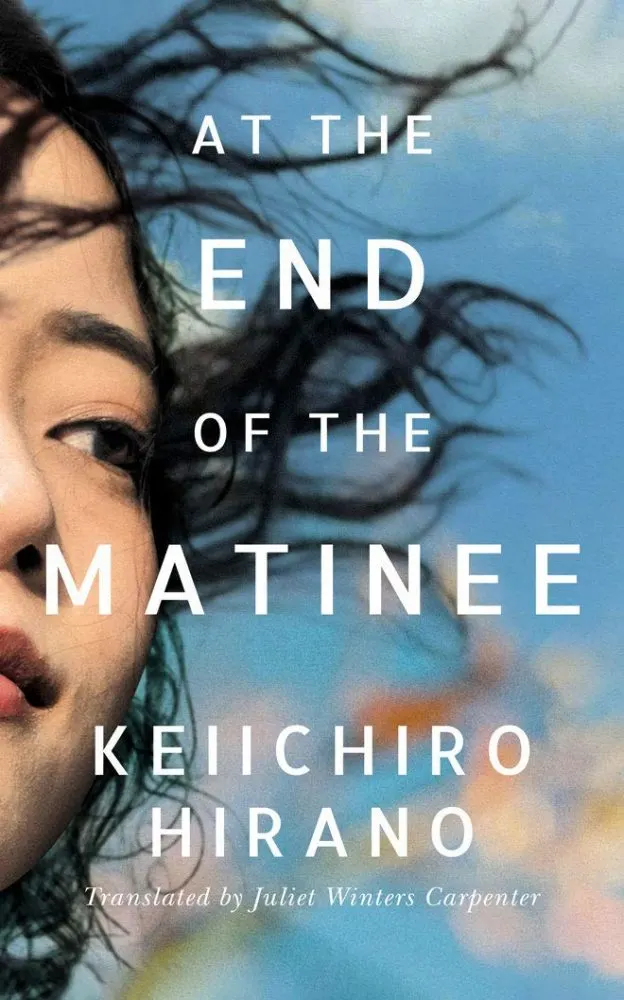
As romance novels go, this is one of the best Japanese books on the shelves. Keiichiro Hirano’s At the End of the Matinee is a book that spans a lot of time and a lot of ground. It is warming, dynamic, and satisfying.
This Japanese romance novel tells the story of two successful people who live very different lives but have found themselves in love.
He is a classical guitarist with multiple albums and world tours under his belt. She is a globe-trotting journalist based in France with her American husband.
Both of our protagonists are around the age of forty, and At the End of the Matinee bucks a lot of romance trends with these characters.
Their age, work, life situations, backgrounds, are all atypical when it comes to traditional love stories.
This is also one of the few Japanese romance novels written by a man, and with such detail and delicacy to boot. It takes its time and deserves to be enjoyed slowly. A wonderful love story.
Kitchen by Banana Yoshimoto
Translated by Megan Backus
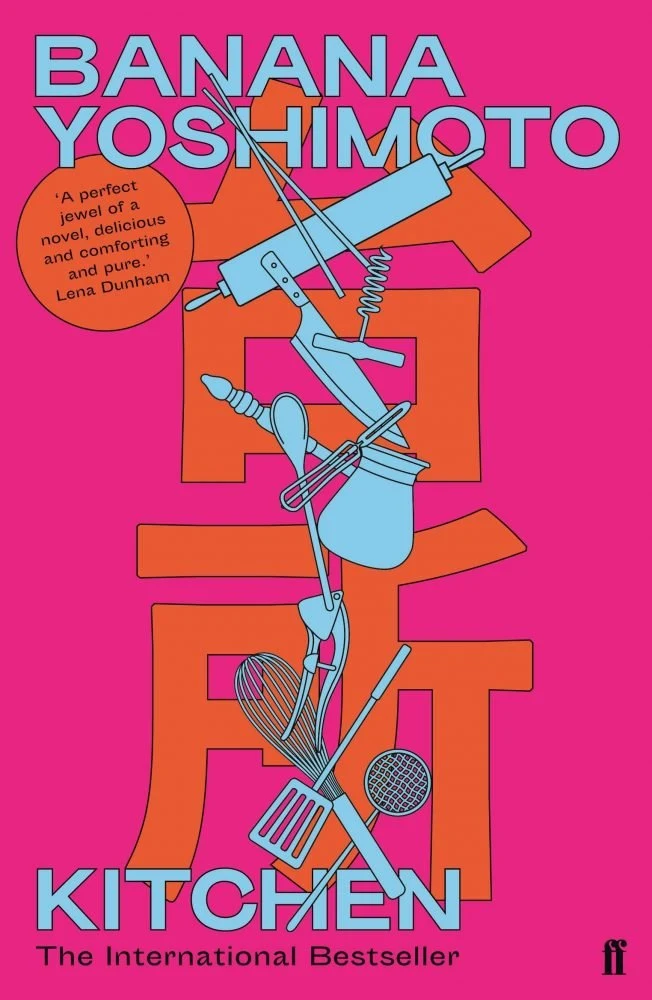
Mikage’s youth is spent in a shroud of death. We are hit with the death of Mikage’s grandmother and an offer to be taken in by a young man of whom her grandmother was a great admirer: Yuichi Tanabe.
Yuichi lives with his mother, though it is quickly revealed that Eriko was in fact, at one time, Yuichi’s father.
And so here we have a love story. But one that reads like a puppet show, with Mikage tied to death’s right hand, and Yuichi to his left.
Kitchen shines brightest as an elucidation of the awful transience of life in its every facet. So much of what we do slips through our fingers without us ever being aware of it.
We are enormous fans of Banana Yoshimoto and Kitchen is one of her best, making it one of the best Japanese books of modern times.
(Taken from our review of Kitchen)
Strange Weather in Tokyo by Hiromi Kawakami
Translated by Allison Markin Powell
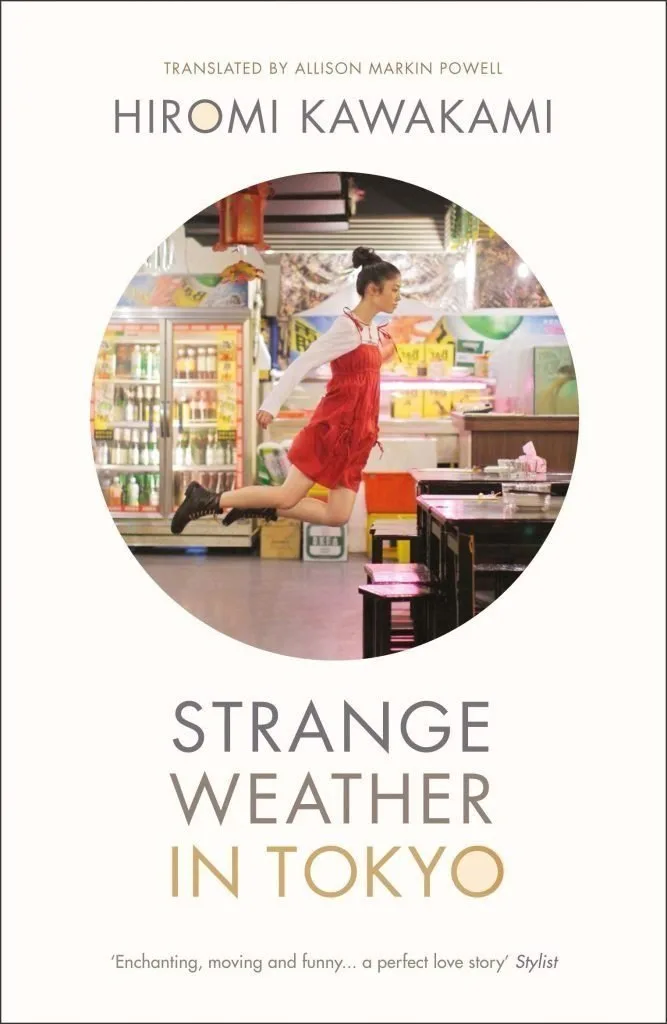
Strange Weather in Tokyo is a cultural examination of post-war Japan packaged into a touching, life-affirming love story for the ages.
Deep in the trench which separates the old and the new, our protagonist Tsukiko is reunited with her old high school Japanese teacher.
She refers to this man only as ‘Sensei’ and through the course of the novel it’s difficult not to become truly invested in the individuals you meet.
Kawakami creates distinct, memorable, and charming characters who you are truly rooting for throughout the novel.
Strange Weather in Tokyo is a clash of modern and classic Japanese culture and customs, and of modern and weathered dating methods.
The writing is clean, to the point, and surprisingly fast-paced. There are some real memorable points of this novel that make for a completely engrossing narrative.
Hiromi Kawakami has written some of the best Japanese books of the past few decades, and Strange Weather in Tokyo is certainly one of them.
(Taken from our review of Strange Weather in Tokyo)
Norwegian Wood by Haruki Murakami
Translated by Jay Rubin
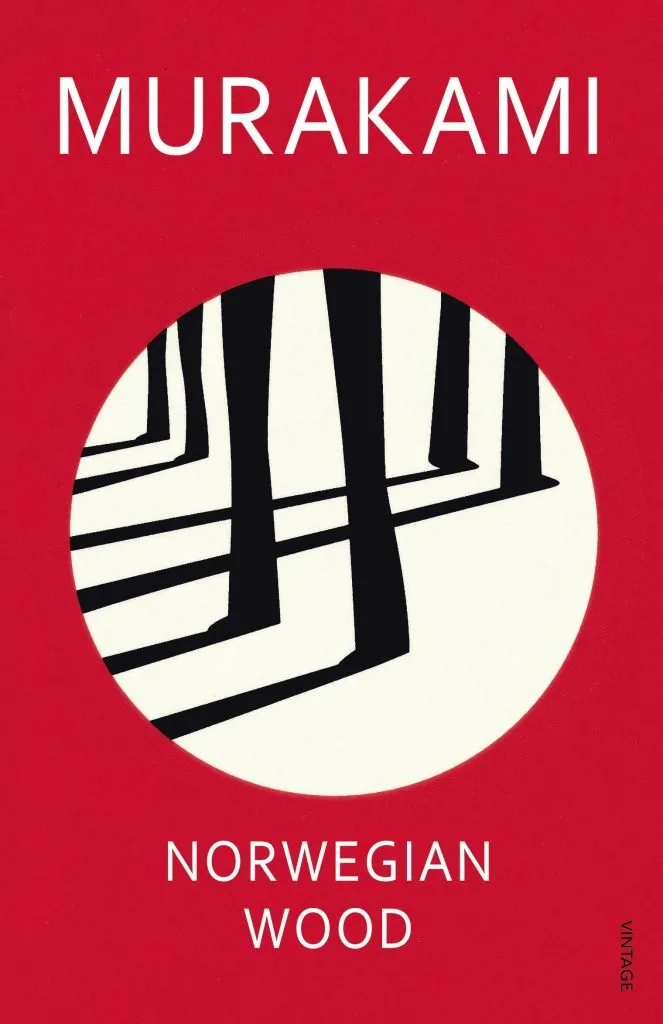
Easily Murakami’s most accessibly and narratively straightforward novel, Norwegian Wood lacks all the otherworldly strangeness and violence that he is known for, and instead offers us a novel inspired by his own life – think of it as his David Copperfield.
Set during the university years of a young man named Toru, this novel recounts his love affair with the girlfriend of his own late childhood friend, lost to suicide; all the while, she is struggling with her own depression and her time living in a kind of mental health retreat.
(Taken from our guide to reading Murakami)
Japanese Folklore Books
Japan has some of the richest folklore in the entire world. Or, at least, the best documented and most accessible folklore.
With ghost stories, yokai, and folktales that have been passed down and recorded for a hundred generations, Japanese folklore is an obsession for many people.
Here is one collection which documents some of the most legendary works of Japanese folklore, and another that is a clever modern feminist folktale by an author we’ve already covered but who has diversity in her work to last for years.
Japanese Ghost Stories by Lafcadio Hearn
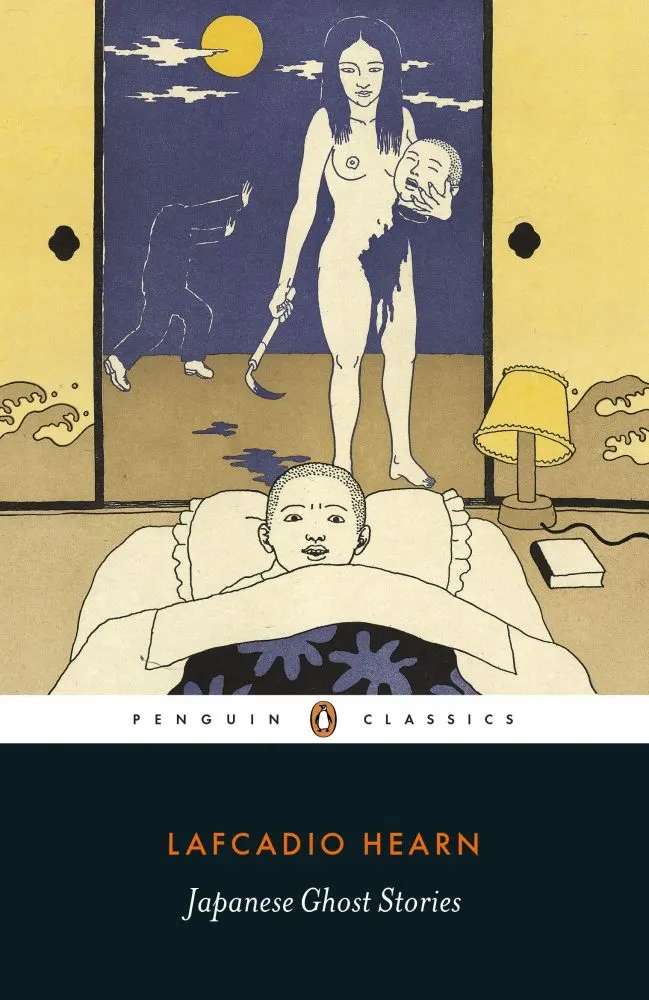
Lafcadio Hearn was an extraordinary man. Born in Greece, raised in Ireland, he spent much of his adult life as a writer in the United States.
Eventually, far later in life, he arrived in Japan and found such a fascination in the folklore of the country that he enlisted the help of local friends to compile a collection of Japanese ghost stories.
Japanese Ghost Stories is the perfect place to start if you’re looking for some Japanese folklore books to read all about the ghosts, fantastical beasts, and yokai of Japanese history.
It’s a beautiful collection of eerie, strange, romantic, unsettling ghost stories from across Japan’s history, recorded here in English for us to enjoy.
Read More: Ten Classic Japanese Ghost Stories
The Goddess Chronicle by Natsuo Kirino
Translated by Rebecca Copeland
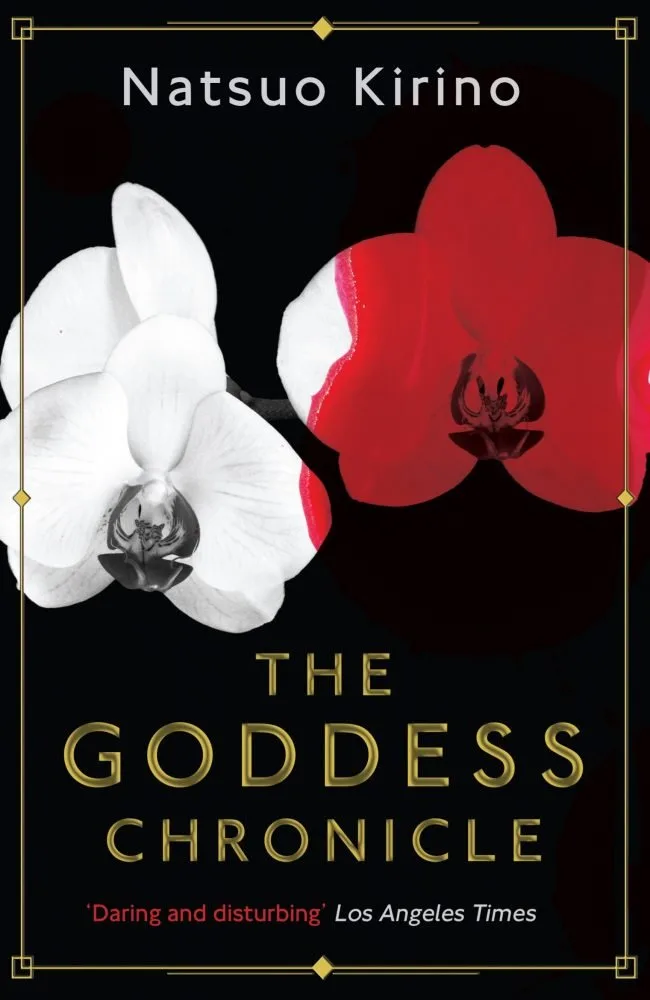
This is not strictly a book of Japanese folklore. Rather, it is a beautiful modern fairy tale written by one of modern Japan’s greatest feminist authors. I’ve already sung Kirino’s praises as the author of Out, but here she delivers a very different story indeed.
The Goddess Chronicle has the tone, fantastical nature, and narrative tropes of a Greek myth, and is today regarded as one of the best modern Japanese folklore books.
The novel tells the story of two sisters born on a strange island. One sister is selected to become the island’s next Oracle, while the other, Namima, is forced to serve the dark realm.
It’s a novel about fighting fate, as Namima breaks away from the island and her destiny to venture out into the world of darkness and danger.
Japanese Children’s Books
I don’t claim to be an expert in children’s literature, but I do know a smart and imaginative book when I see it.
Below are two beloved works of Japanese fiction, one that has been transformed into one of the biggest and best anime movies of all time, and the other is a manga loved by children across the planet.
Read More: Must-Read Japanese Children’s Books
How Do You Live? by Genzaburo Yoshino
Translated by Bruno Navasky
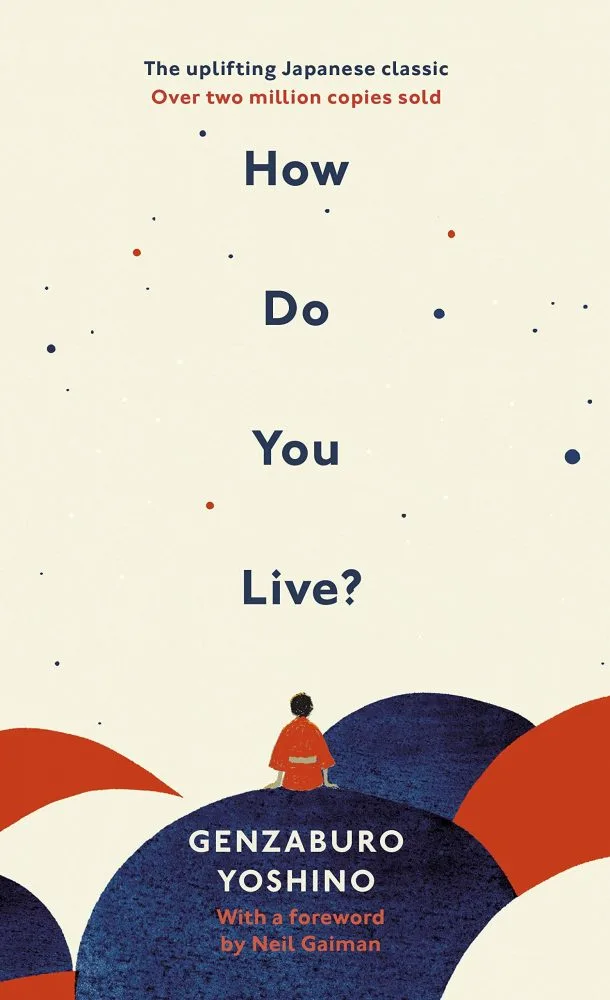
Written in the 1930s by Genzaburo Yoshino, How Do You Live? is the inspiration for the Studio Ghibli movie of the same name, directed by the legend himself: Hayao Miyazaki.
How Do You Live? was Miyazaki’s own favourite book growing up, and so he has chosen to adapt it into an animated film.
Set in the same 1930s in which it was written, How Do You Live? follows the fifteen-year-old Copper.
Copper’s father has passed away and he is being raised by his mother, as well as by an uncle to acts as a kind of moral compass for the young and growing boy.
With each chapter, Copper encounters a situation or a problem; he has a chance to grow, be kind, make mistakes, and learn.
Between these chapters, we get a letter from Copper’s uncle that inspires him or teaches him a specific message. Copper can then apply these lessons to his life as he continues to grow as a young man.
As children’s and YA books go, How Do You Live? is one of the best Japanese books for teaching good morals, kindness, and the power of unity amongst people, whatever their age or circumstance.
Kiki’s Delivery Service by Eiko Kadono
Translated by Emily Balistrieri

Best known as one of Studio Ghibli’s most beloved movies, directed by Hayao Miyazaki back in 2003, Kiki’s Delivery Service, much like Howl’s Moving Castle, began its life as a children’s novel.
But while the novel of Howl’s Moving Castle was written by a beloved Welsh author, Kiki began her life in Japan, created and written by Eiko Kadono in 1985.
Coinciding with the release of the film in the West, an English translation of the novel hit shelves in 2003. Now, however, we have a fresh new translation for 2020 by Emily Balistrieri.
And what a heartfelt, warm, and sweet translation it is. Kiki, with all her tenacity, sensibility, and cleverness feels more alive than ever, and through Balistrieri’s translation Kiki’s attitude is truly infectious.
Case Closed by Gosho Aoyama
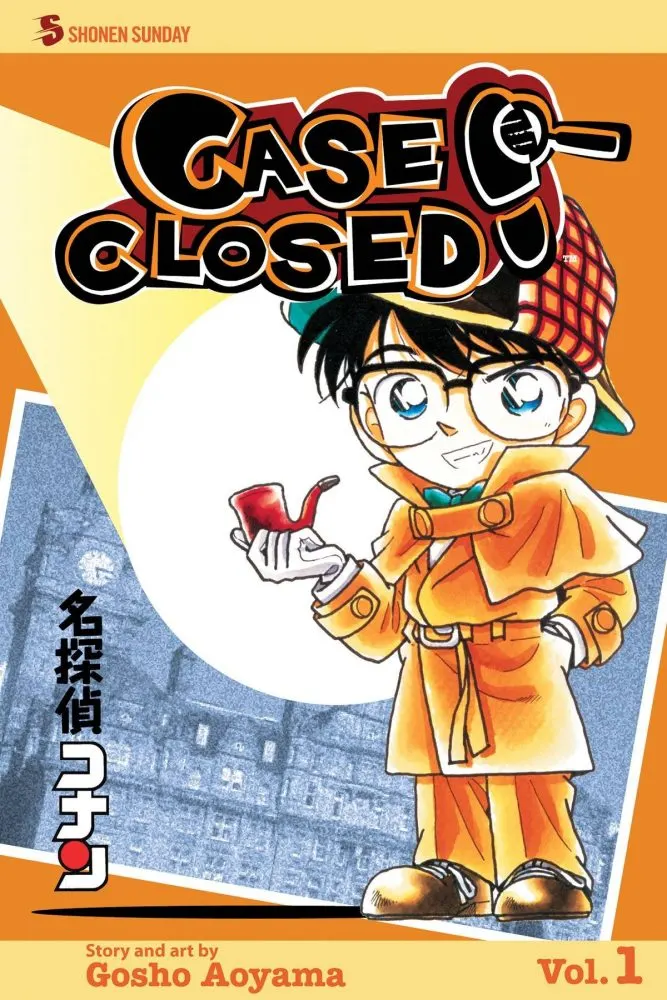
Few manga are as beloved as Case Closed and few protagonists as adored as Detective Conan (named after the legendary Sherlock Holmes author Arthur Conan Doyle).
This long-running manga series tells the story of a teenage genius detective who has been forced to drink a potion that transforms his body into that of a little boy while still retaining his genius mind.
There haven’t been many stories with a premise so perfect for young boys with a love of mystery to enjoy.
It reminds me of just how perfect the once popular DC comic Captain Marvel (now known as Shazam! Due to a long-running legal dispute) was for American boys in the early 20th century.
